WORKING WITH PRECISION
Precisionscreen’s new modular gear is helping to redefine an entire range of equipment, as demand for construction materials surges.
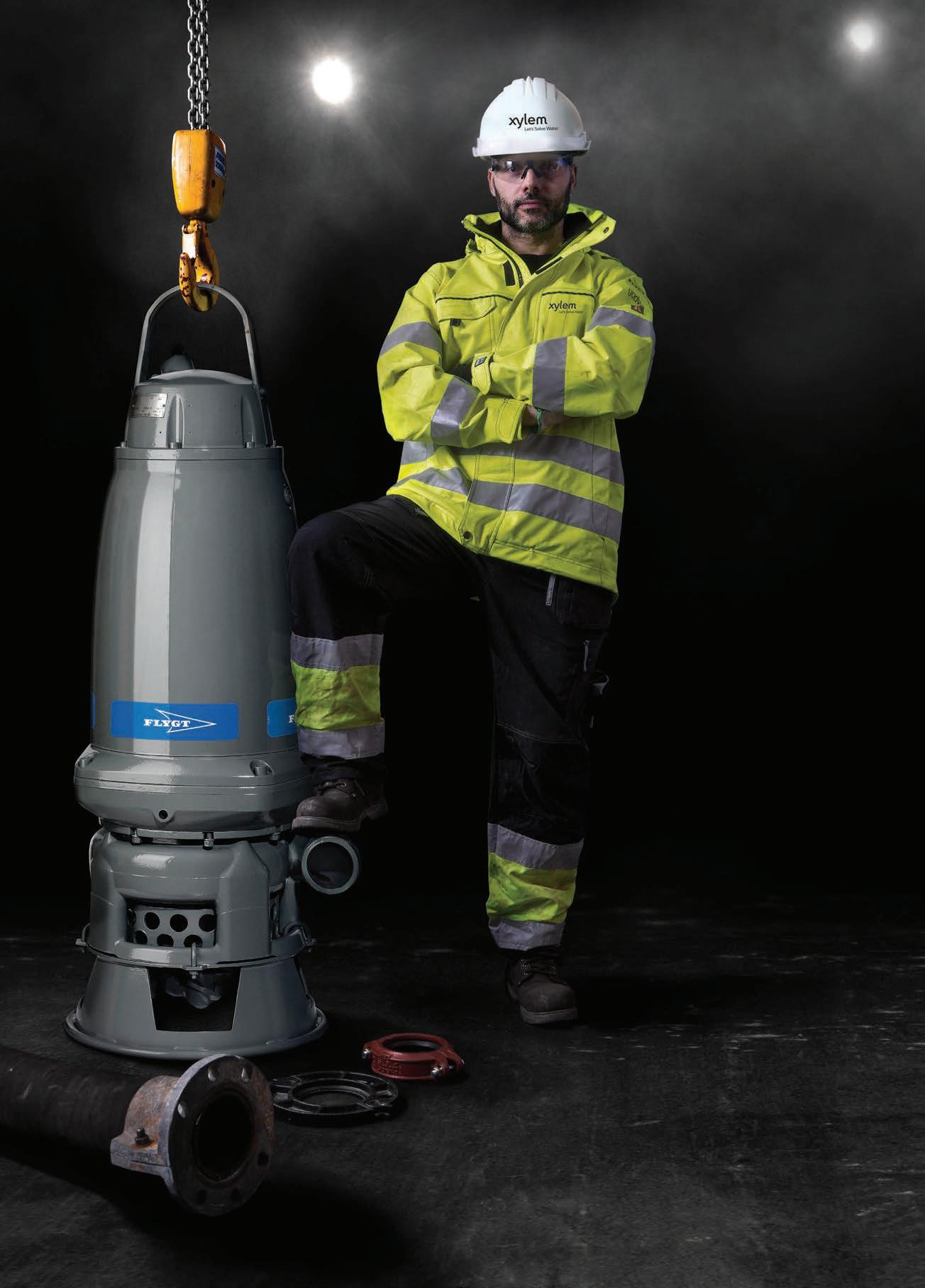

INSIDE TEREX’S WASHING PLANTS
Terex Washing Systems’ new washing plant is helping to feed sand and gravel products to concrete sites.
NO RAINING ON NEWCASTLE SAND’S PARADE
McLanahan has provided vital equipment for a major sand supplier, to meet demand for washed sand.
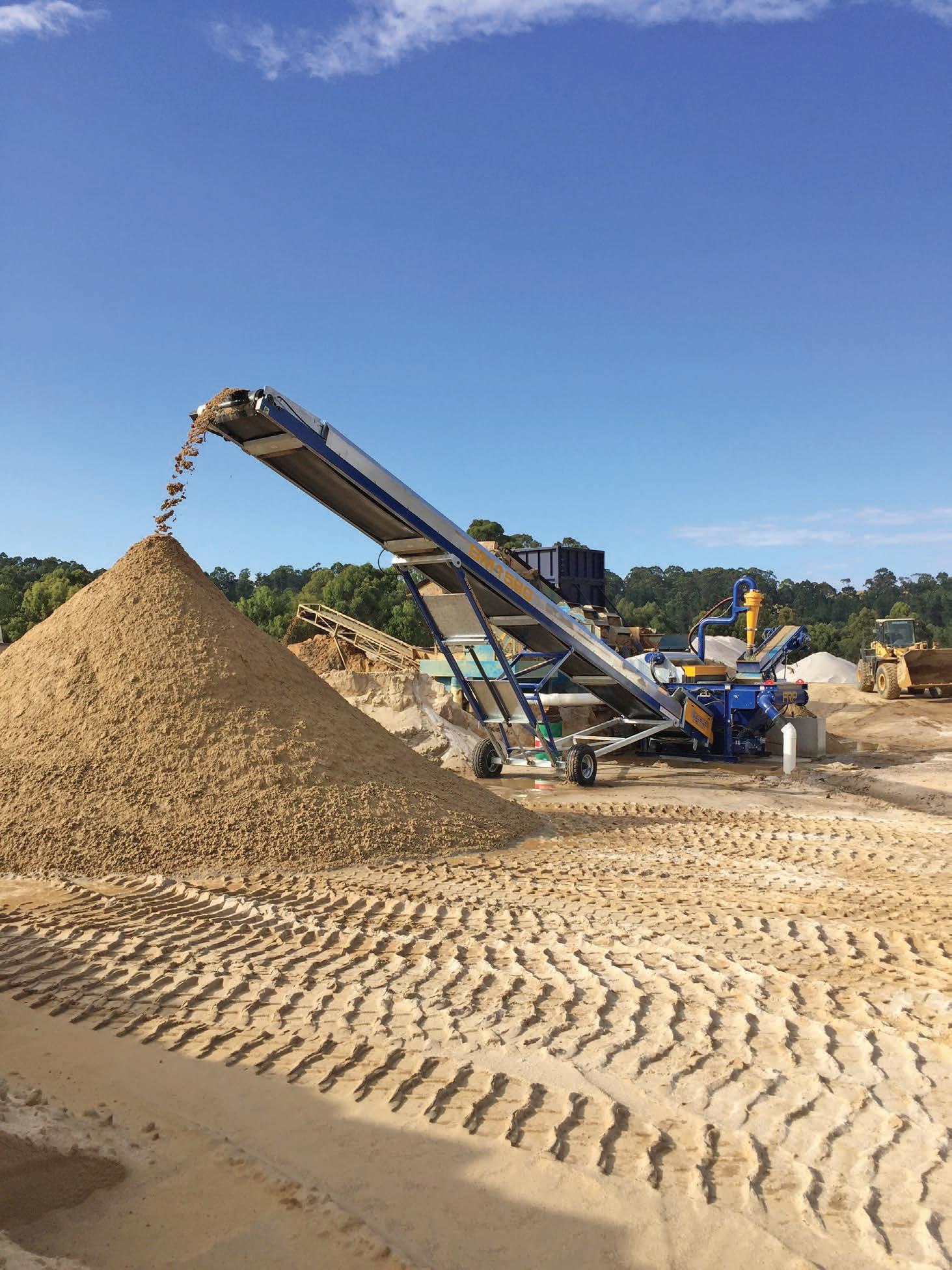
20 32 44 OFFICIAL JOURNAL OF THE INSTITUTE OF QUARRYING AUSTRALIA JUNE 2023

Call us today on 1300 566 287 to find out more. Upgrade your fleet with Komatsu iSite Equipped on all HD405-8 and HD605-8 Dump Trucks Komatsu iSite provides production visualisations and real-time overviews of machine movement and production to allow you greater control. Komatsu iSite functionality is only available with an active subscription. For more information, visit www.komatsu.com.au/innovation/smart-construction/komatsu-isite
Precisionscreen’s
Terex
24 SURVEYING THE SURVEYORS
Operating to help the extractive industries meet best practice across the board, Eltirus connects and works with quarries and mining operations.
28 UNBLOCK THE ROCK
A major Victorian quarry has installed a unique solution to eliminate clogged screens.
30 NEW CAT EXCAVATOR FOR THE BIG JOBS
Cat has unveiled a hydraulic excavator which combines power and a heavier counterweight to work with larger tools.
38 BEING GREEN? TOO EASY
Turns out it is easy being green. Or at least John Deere makes it look that way.
40 POWERING THROUGH
Lincom has introduced one of the largest mobile jaw crushers currently on the market. Quarry spoke with the first Australian company to use it.

42 MOBILE CRUSHER BOOSTS CIRCULAR ECONOMY


An Adelaide-based demolition and concrete recycling company has enhanced its capabilities with a Metso Outotec i908S mobile impact crusher.

46 SIX THINGS ABOUT SAND PROCESSING
Superior Industries’ mineral wet process guru, John Bennington, outlines the six biggest things to know about sand processing.

Astec
50 JUST HOW SAFE IS THE SAFEGUARD MECHANISM?
The Federal Government’s safeguard mechanism is set to slash carbon emissions. But there is a fear that without protections in place, manufacturing will be pushed overseas.

Quarry June 2023 3 36 20 JUNE 2023 www.quarrymagazine.com QUARRY Precisionscreen’s new modular gear is helping redefine an entire range of equipment, as demand for construction materials surges. Terex Washing Systems’ new washing plant is helping to feed sand and gravel products concrete sites. 20 32 44 OFFICIALJOURNALOFTHEINSTITUTEOFQUARRYINGAUSTRALIA JUNE2023
ADVERTISER: Precisionscreen has a long history with supporting the Australian extractive industry.
in 1986, Precision Screen has grown from a family company, to a business that has equipment found in over 15 countries.
JUNE 2023 VOLUME 31, ISSUE 6 34 44
WITH PRECISION
COVER
Established
IN THIS ISSUE
WORKING
new modular equipment is helping to redefine screening plants.
GENERATION
ASTEC INTRODUCES THE NEXT
Industries
in its next-gen
and screening plant range.
LOOK INSIDE TEREX’S WASHING PLANTS
has launched models
crushing
A
Washing Systems’
wash plant
feed sand and gravel to concrete sites. NO RAIN ON NEWCASTLE SAND’S PARADE McLanahan has provided vital equipment for a major sand supplier.
06 FROM THE EDITOR 08 FROM THE PRESIDENT 10 NEWS THIS MONTH 18 PRODUCT FOCUS 54 IQA NEWS 56 IQA MEMBER SPOTLIGHT 58 GEOLOGY TALK EVERY MONTH
new
is helping
FEATURES
2022 LIPPMANN L300C CONE CRUSHER

The Lippmann 300c is a heavy duty cone crusher with an innovative material flow that maximizes capacity and throughput while delivering a consistently high quality product. POA
Heavy duty 20x6 screen box, Cat C7.1 engine, hopper extensions, apron feeder, full radio remote control function
TEREX M515 HEAVY DUTY ROCK TROMMEL


New & Used units available throughout Australia, Tricon is Australia’s only authorised Terex MDS distributor.
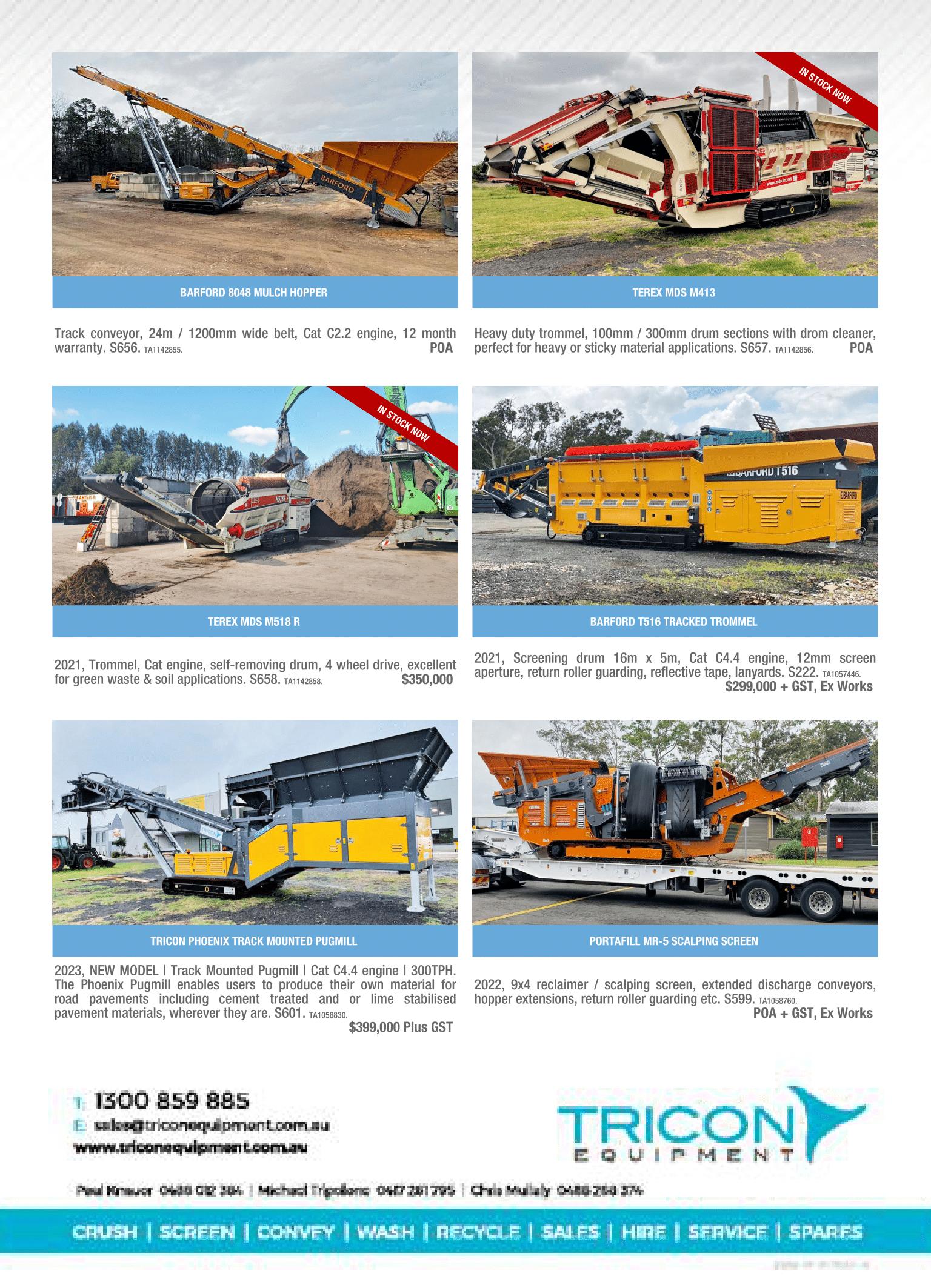
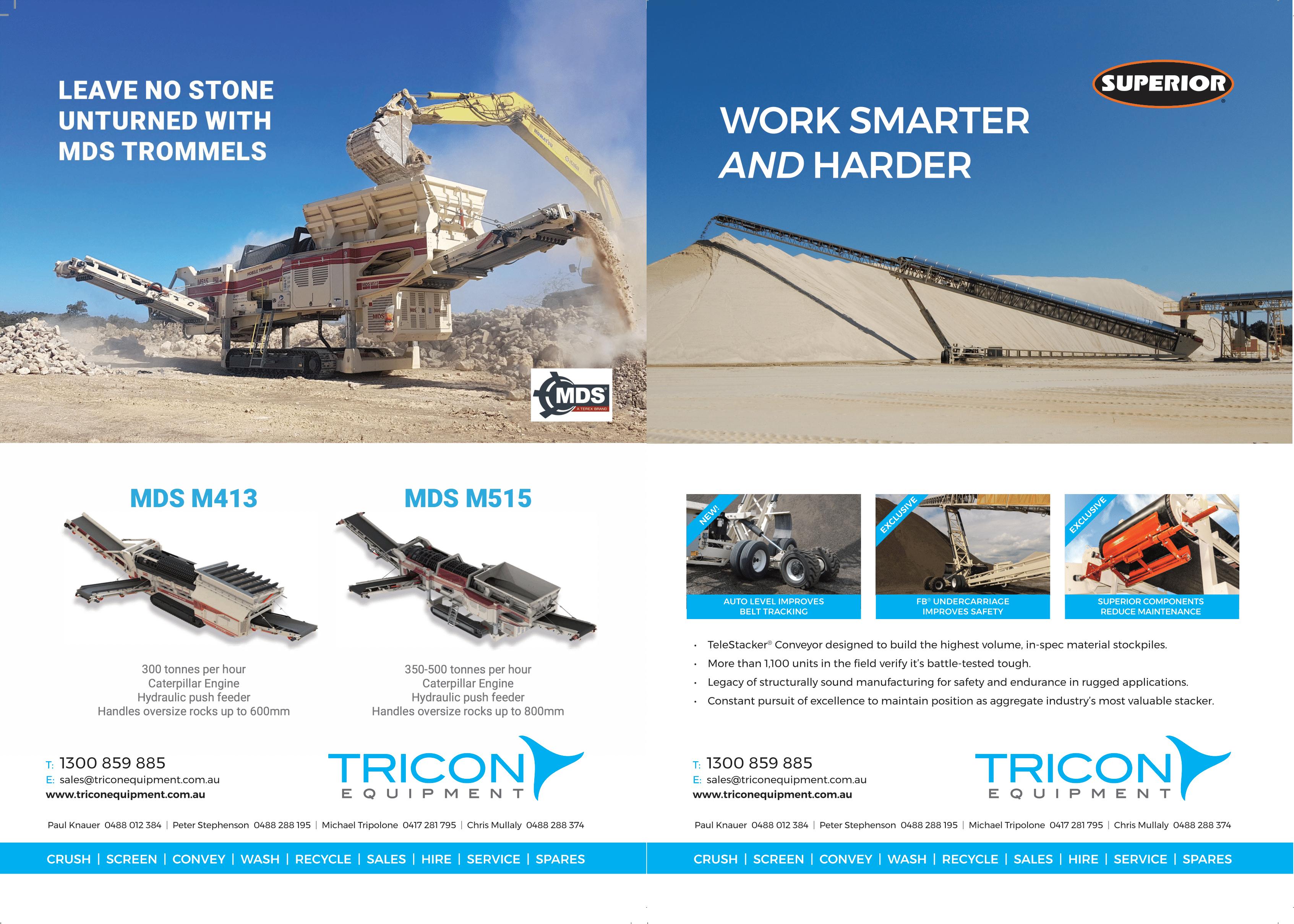



LIPPMANN
&
MOBILE SCREENS
Lippmann LS range, 22x6 and 20x5 triple deck finishing screens now available, POA
LIPPMANN L620R 20x6 SCALPER
LS520
LS622
SUPERIOR TSSA 150' TELESTACKER

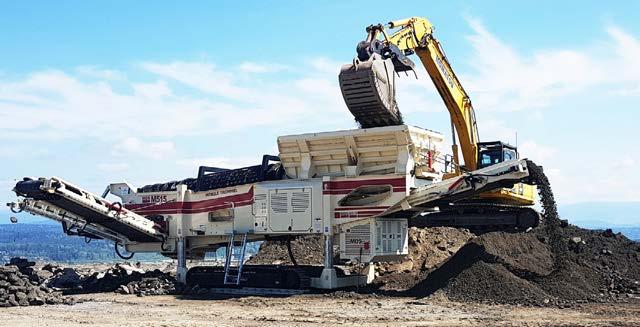

New Superior Telestackers in stock, 1000TPH, 46m, AS3000 electrics, AS4324 structure, auto stockpile, radio remote control. POA


SUPERIOR ALLIANCE LOW WATER WASHER
Wash your natural, manufactured or recycled sands with a greatly reduced water demand. POA




SUPERIOR TSSA 130' TELESTACKER
TSSA 130’ telestackers back in stock, 1000TPH, AS3000 electrics, AS4324 structure, auto stockpile, radio remote control. POA
SUPERIOR
SUPERIOR GUARDIAN 6203
Superior Guardian 6203 20x6 horizontal screen boxes now available Australia wide (ex QLD & NSW) POA

 RAZERTAIL TRUCK UNLOADER
RAZERTAIL TRUCK UNLOADER
BOLSTERING THE BIG BUILD
All around Australia, Federal and State governments have been increasing their pipeline of infrastructure works.
Nationally, there is a $120 billion rolling 10-year infrastructure investment pipeline. In Victoria, the State Government plans to invest $85.3 billion into infrastructure spending over the next four years.
This building boom is already creating increased demand for bulk materials like cement, aggregates, and sand.
However, the industry faces significant supply chain problems. The COVID-19 pandemic, war in Europe and costly delays across the globe have led to vital materials stuck in transit.
Quarrying is no exception, and the industry has had to adapt to keep up with the heightened demand for construction materials.
Knowing what is needed from customers is a crucial part of this, which is why the Inside Construction Expo plans to bring builders and quarries under the one roof.
Construction material producers are invited to take part in the event, which will take place from 20 to 21 September, at the Melbourne
Convention and Exhibition Centre. Discussions at the expo will tackle big issues facing the sector, such as the skills shortage, the need for digital transformation, and the importance of safety.
The centrepiece to the event will be about Victoria’s Big Build, expanding out to showcase construction on other significant infrastructure taking place around Victoria.
It also features robust conference program featuring more than 100 speakers across four stages.
The event will also host the inaugural Inside Construction Foundation Awards, which aim to showcase the industry’s innovative people and projects. The awards will recognise individuals and businesses who excel and have promoted safety and environmental sustainability throughout major and local projects.
It presents an opportunity to get in touch with quarrying customers and to find out how to support other aspects of the supply chain.
To learn more about the how you can get involved, visit insideconstructionexpo.com.au
Paul Hayes Managing Editor
Published by:
379 Docklands Drive Melbourne VIC 3008
T: 03 9690 8766 www.primecreativemedia.com.au
Chief Executive Officer John Murphy john.murphy@primecreative.com.au

Managing Editor Paul Hayes paul.hayes@primecreative.com.au
Assistant Editor William Arnott william.arnott@primecreative.com.au
Journalist
Lewis Cross lewis.cross@primecreative.com.au
Business Development Manager
Les Ilyefalvy les.ilyefalvy@primecreative.com.au
Client Success Co-ordinator
Janine Clements janine.clements@primecreative.com.au
Design Production Manager Michelle Weston michelle.weston@primecreative.com.au
Art Director Blake Storey
Graphic Design
Kerry Pert, Tom Anderson, Louis Romero
Subscriptions
T: 03 9690 8766 subscriptions@primecreative.com.au
The Publisher reserves the right to alter or omit any article or advertisement submitted and requires indemnity from the advertisers and contributors against damages or liabilities that may arise from material published. © Copyright – No part of this publication may be reproduced, stored in a retrieval system or transmitted in any means electronic, mechanical, photocopying, recording or otherwise without the permission of the publisher.
EDITORIAL
“THE BUILDING BOOM IS ALREADY CREATING INCREASED DEMAND FOR BULK MATERIALS LIKE CEMENT, AGGREGATES AND SAND.”
6 Quarry June 2023
STRONG LIKE A SPECIALIST. VERSATILE LIKE AN ALL-ROUNDER.
MOBIREX MR 110/130 EVO2
MOBIREX MR 110/130 EVO2
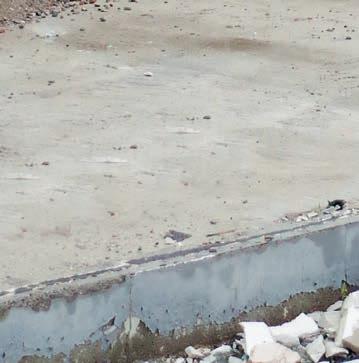







PERFECT FOR HIGH THROUGHPUT PERFORMANCE – IN NATURAL STONE AND FOR RECYCLING APPLICATIONS. The MOBIREX MR 110/130 EVO2 mobile impact crushers feature a state-of-the-art material flow concept and a powerful diesel-directdrive – for high throughput combined with optimised wear and consumption. With their compact design, the machines are easy to transport and as quick to set up as they are to dismantle. The MR 110/130 EVO2 – versatile and ready for high performance.



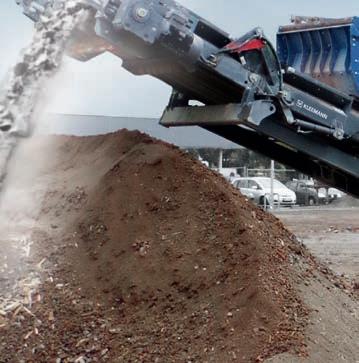
A WIRTGEN GROUP COMPANY
www.kleemann.info WIRTGEN AUSTRALIA PTY LTD · National Ben Lefroy +61 448 030 420 · WA Greg Lewis +61 448 033 441 · QLD/NT Adam Lane +61 459 031 778 · NSW Linn Smith + 61 418 276 649 · VIC/SA/TAS Kyle Fredericks +61 447 539 302 · sales.australia@wirtgen-group.com · www.wirtgengroup.com/australia
PLANNING AHEAD TO STAY ON TOP OF SAFETY AND WORKPLACE DEVELOPMENT
Safety has come up regularly the last few months and will continue to do so into the future.
With a highly regulated industry and workers who are routinely on the face to deliver essential materials to the modern world, we all have a commitment to ensure everyone in the extractive resources industry gets home safe.
The IQA’s mission has always been to remain as the leading provider of technical quarry training, specific quarry courses and quarry manager training for the extractive industry.
Safety is an important and integral part of the above mission statement - represented with the continual work done on developing and delivering the IQA Competency and Education Framework.
The competency framework plays an important role in helping sites plan workforce development, consider the skills required in succession planning and help sites evaluate the competencies of their workforce as required under the various state legislations.
The IQA stresses the importance of planning training for workforce development and safety, to grow our members and ensure that the best possible safety outcomes are achieved everyday by our members.
We continue to strengthen our education development pathways in order to support improved knowledge, skills and business outcomes for our community, regulators and stakeholders.
At the end of the day, we want our people to be as rock-solid as the material we move.
The IQA has a long and proud history of bringing the extractive industry together. We’ve continued that journey this month, and made strides in advancing our vision to
educate and lift up our community.
The Quarrying and Mining Safety and Health Conference has finally reached us, with the first event kicking off this month in central Queensland and the second taking place next month in July for the north Queensland area.
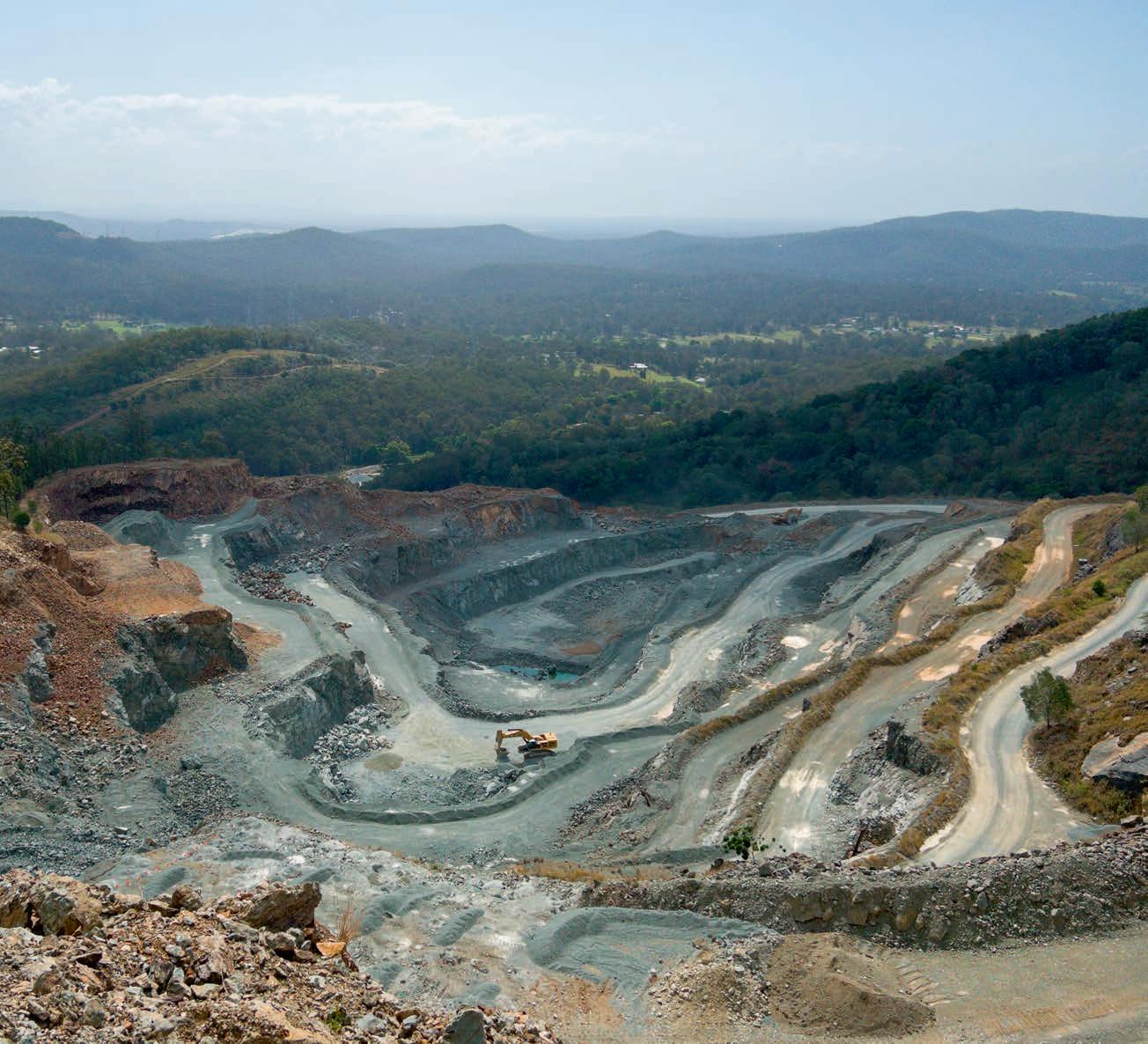
It’s been incredible to see the work which has been put in by attendees for the event, reinforcing the commitment to safety and health held by all who work with the IQA.
As always, we have continued to be supportive and transparent about goals of cultivating a diverse and inclusive workplace where employees feel safe and valued.
Our annual diversity and inclusion day is now only 3 months away and is a perfect chance for everyone across the industry to get involved and realign priorities to ensure a fair and equitable workplace.
Diversity and inclusion days represent an invaluable tool for our industry to spread awareness, provoke discussion and facilitate the inclusion of all into our industry.
As more young people begin to filter into the industry, it’s important that we keep our workplaces accessible and competitive to ensure the longevity of the industry.
As always, I’d like to thank our branch members, committee members and the broader IQA community. It’s your continued support and contributions that make IQA what it is today. As we approach the end of this current financial year, remember to keep pushing each other to uphold best practices within the industry.
Let’s all work together to grow the industry.
Duncan Harris President Institute of Quarrying Australia

www.quarry.com.au
The IQA’s Strategic Plan 2020 to 2025 embodies the following vision, values and strategic priorities:
Vision:
Educating and connecting the extractive and associated industries.
Values:
e and sustainable environment. ersity and inclusion.
orking development skills, careers and life-long learning.
• Networking, connection, trust and communication.
Strategic Priorities:
• Maximise outcomes for industry through education and sustainable practise.
• Increase our relevance.
• A high performing and sustainable organisation.
IQA Contacts:


Phone: 02 9484 0577
Email: admin@quarry.com.au
Chief Executive Officer
Kylie Fahey
Deputy President
Sarah Bellman
Company Secretary
Rod Lester
For all education, member and branch enquires please email: admin@quarry.com.au.
8 Quarry June 2023
IN ORDER TO SUPPORT IMPROVED KNOWLEDGE, SKILLS AND BUSINESS OUTCOMES FOR OUR COMMUNITY, REGULATORS AND STAKEHOLDERS
The Institute of Quarrying Australia
PRESIDENT’S REPORT
Educating and connecting our extractive industry
Quarry design services
We work with quarry operators to maximise the value of their resources through effective quarry planning, conducted by highly experienced, qualified mining engineers. Our integrated team provides an end-to-end solution that results in the highest NPV pit design that is geotechnically and operationally sound. Ask us how we can help with your next quarry design.

+61 7 3051 0606 • L2, 127 George Street Brisbane Q 4000 Australia • eltirus.com KNOW WHAT’S IN THE GROUND | EXTRACT IT VIABLY | ENSURE COMPLIANCE
QUEENSLAND WORKFORCE CONNECT FUND HELPS COMBAT SKILLS SHORTAGE
Announced as a core part of the ‘Good people. Good Jobs’ Queensland Workforce Strategy’ that is to be delivered over the course of 10 years, the Workforce Connect Fund is designed to increase investment and retention of workers in industry projects.
Working to drive Queensland towards a diverse workforce that is prepared to take best advantage of today’s jobs and adapt to future opportunities, the connect fund has key relevance for increasing the accessibility and wider job opportunities in the quarrying sector.
The Department of Employment, Small Business and Training, identifies the Workforce Connect Fund as an initiative “designed to increase investment in industry and community-led projects that address
attraction, retention and participation issues within the workforce.”
“It aims to drive systemic, industrywide change in relation to these issues to enhance workforce outcomes for employers, employees and jobseekers.”
With regards to funding, the Connect Fund provides grants for scalable projects delivered by industry peak bodies and community peak organisations to connect, develop and implement new and innovative strategies, services and/ or mechanisms that support the attraction and retention of employees now and into the future.



This funding has high value for the quarrying sector, allowing for increased opportunities to contribute to industry projects and increase the diversity of roles, including HR


FOR INDUSTRY PEAK BODIES, GRANTS OF $20,000 TO $200,000 UNDER THE GROWING WORKPLACE PARTICIPATING FUND ARE ALSO AVAILABLE.
and administrative positions, in operations.

Organisations proposing large-scale projects can apply for funding of up to $1 million each, with each project to be delivered over a maximum 12-month term.
The 2022–23 Workforce Connect Fund funding round closed on 25 November 2022, with the upcoming 2023–24 round of funding anticipated to open in the second half of 2023, according the Queensland Government.
For industry peak bodies, grants of $20,000 to $200,000 under the Growing Workplace Participating Fund are also available.
For more information on the Workforce Connect Fund and eligibility criteria, visit the Queensland Government website.
10 Quarry June 2023
NEWS
The Workforce Connect Fund allows for greater opportunity within the quarrying industry.



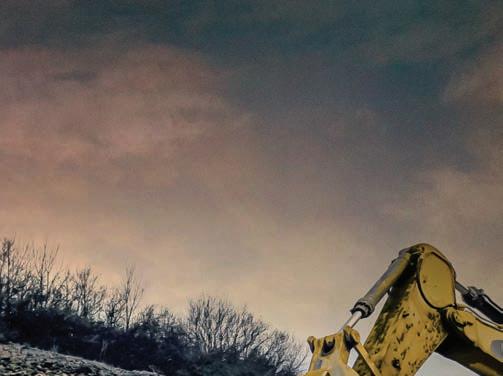
















NEW BITUMEN IN TRIAL AT WINGECARRIBEE
An innovative new blend of bitumen has been laid by the Wingecarribee Shire Council, with the aggregate already ‘paying dividends’ for locals. Located in NSW, the Wingecarribee Shire Council commenced the trial of the new bitumen pavement solution early in March, to help fast-track works on Station Street, ahead of the national Easter holidays.
To minimise inconvenience for motorists and businesses and enable the road to be accessible by easter, the Council is laying the new pavement solution, called EME2, after regular working hours.
The EME2 is already pulling its weight, with multiple benefits observed
both by the council and motorists, as Karin Targa, Wingecarribee Council’s Director of Service and Project Delivery, spoke on.
“EME2 is an ultra-hard binder and asphalt which forms a thinner but stronger, structural layer of road surfacing,’ Targa said.
“Since the start of the month we’ve already constructed and laid new pavement and bitumen along two thirds of the entire length of the road. Because we’re ahead of schedule we have already been able to tackle the opposite side of the road starting, which has put us back on target to re-open the road in time for Easter travel.”
ADBRI APPOINTS ACTING CFO
Adbri has announced the appointment of General Manager of Finance, Dianne Mong, to Acting Chief Financial Officer, effective from 20 March 2023.

Mong has worked as a part of Adbri since April 2022 and has more than 20 years of experience across the professional services, property and telecommunications sectors, with expertise in financial control, taxation and treasury.
During her time at Adbri, Mong has managed all areas of the Group’s finance function and has previously held senior finance positions with TPG Telecom
Karin Targa
Targa reminded motorists that the existing changed traffic conditions would remain the same, with the only difference being the opposite side of the road now open to motorists.
“Until the road can be fully reopened only northbound traffic will be able to continue to use the road,” she said.
The reconstruction works will continue into the night until the entire length and breadth of Station Street had been repaved and improved.
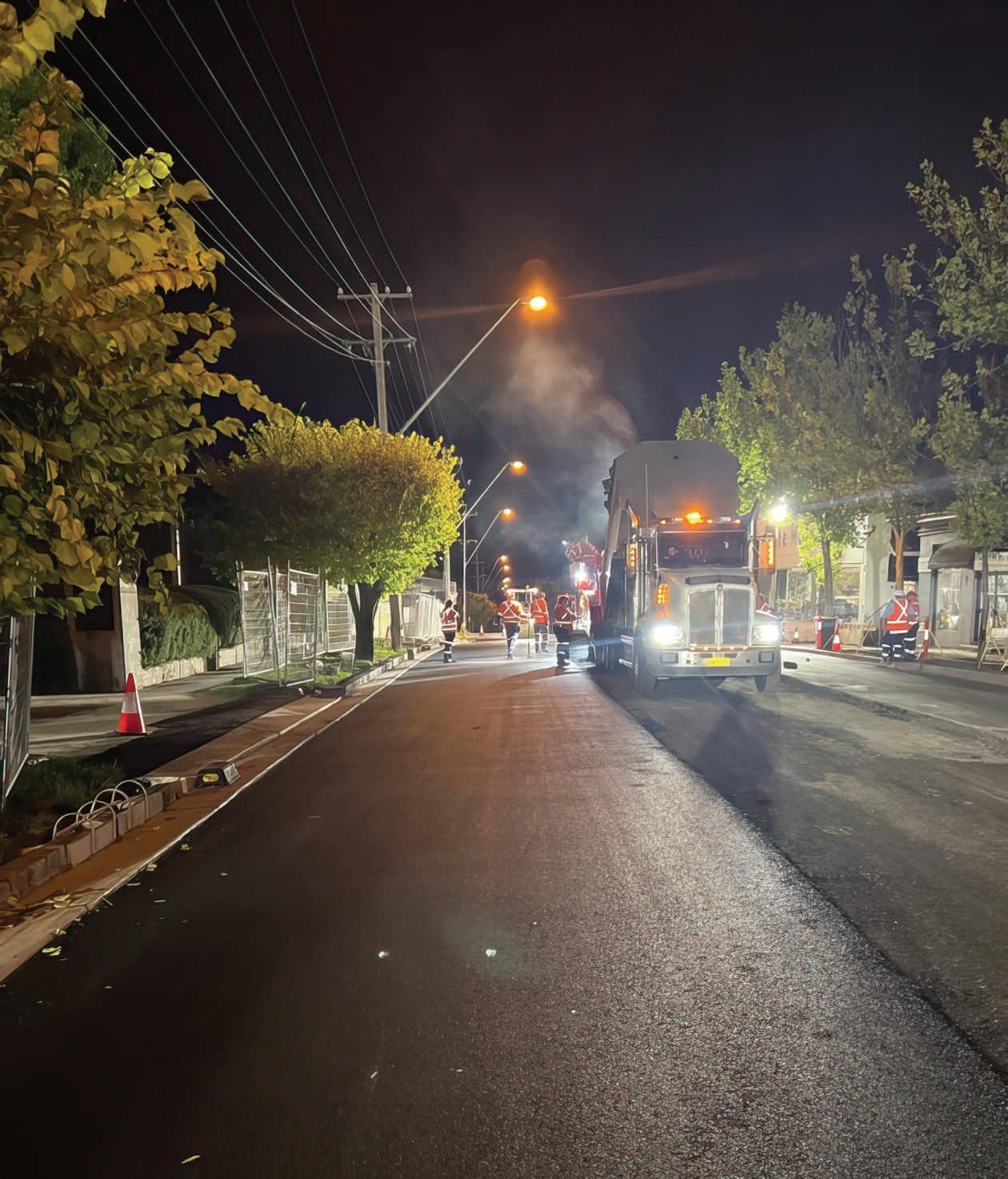
“We thank all road users and businesses for their ongoing patience and understanding as we continue to work towards building a better Bowral for everyone.”
Limited, Australand Property Group (now Frasers Property Australia) and KPMG Australia.
The Adbri Board thanks Peter Barker for their service as Interim Chief Financial Officer during the decision process to appoint Mong.
Barker is approaching the end of their agreed term and will continue working with Adbri in an advisory capacity to support Mong as they transition into the new role.
The recruitment process for a permanent Chief Financial Officer for the company is reported to be well progressed.
12 Quarry June 2023 NEWS
Station Street in the middle of asphalt being laid.
EME2 IS AN ULTRA-HARD BINDER AND ASPHALT WHICH FORMS A THINNER BUT STRONGER, STRUCTURAL LAYER OF ROAD SURFACING
Crusher & Screen Sales Pty Ltd (CSSH) are the IMS distributor for Australia since 2012 and have been instrumental with IMS in developing plant for Australia conditions and requirements, there has been a strong emphasis on high quality plant for blending and pugging material for the quarry, construction industry, remediation of contaminated soils and blending of recycled products. The plant has been designed with large feed hoppers and capacity to service small to large operations with manual controls that in most cases have the ability to be fully automated insuring constant and accurate blending and reducing operator errors. IMS also manufacture a large range of wheel and track conveyors with production up to 2000 tonnes per hour and up to 45 meter long and screening plants.
CSSH and IMS together continual to improve their plant with feed back from clients and adjusting or adding new plant and ideas particularly in the blending of products to make previously discarded and recycled products into a sellable item, there is a strong desire by departments to add recycled concrete and other products into construction materials to reduce waste, landfill and raw material demands.
The IMS-PM1050-16Tb Track Pugmill is now the largest selling pugmill In Australia with capacity of up to 500 TPH, available in manual adding only water / liquids or fully PLC computer controlled and recording system adding cement, lime, or most powders etc. The PLC can be controlled by an iPad in the loader operating all the functions including
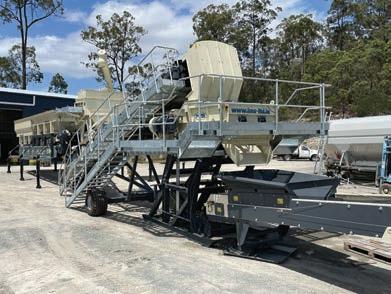
client or batch mix changes, loading truck and multiple trailers direct, stopping automatically once each item had been loaded with the correct tonnes and then restarted off the remote to repeat on the next truck or trailer. The recording system displays all batchers for the day and filing into projects or client names along with a summary of the total products used for the day for management control. All reports can be sent to the office or client showing the programmed percentages of each product compared to the actual results including a graph combining all the products processed. The control system can be integrated with other IMS products including electric modular blenders and pugmills offering up to four raw materials and multiple powders and/or liquids all blended at once.
New Plant in stock for sale
•IMS- PM1050-16TB Track Pugmill with Silo option and full automation

•IMS – BP1200-9TB Track twin hopper blender with mixer
•Rubble Master (RM) Track 22x5 three deck screen
•Rubble Master (RM) Track 16x5 two deck scalping screen
•Rubble Master (RM) Track 18x5 two deck screen
•IMS – 24-meter track stacker with loader feed hopper
• IMS – 14-meter track stacker with five-meter loader hopper with tipping grid
•IMS- 20-meter track stacker with a 1200mm wide belt can produce 900 TPH and a 300mm rock
•IMS 15-meter wheel hydraulic stacker
www.crusherscreen.com
IMS electric modular Pugmill & twin hopper Blender with and 24-meter radial conveyor with auto radial return and auto lift as the stockpile height increases, fully automated and in stock. Option of four hoppers.
John Andersen 0424 181 056 Chris Wong 0424 180 860
Lot 4, 181 Sandy Creek Road Yatala QLD Email info@crusherscreen.com
QUARRY SAND SAVING SOUTH AUSTRALIAN BEACHES
The SA government’s autumn beach restoration program began in March with replenishment of the Semaphore Park dune buffer and plans for future replenishments for Henley Beach, Henley Beach South and West Beach, with the program involving the use of quarry sand.
10,000 cubic metres of sand collected from the Semaphore breakwater have been contributed to the Semaphore Park dune buffer and to address low beach levels at Henley Beach and Henley Beach South, a total of 15,000 cubic metres of quarry sand have been delivered to the beaches.
West Beach will receive 50,000 cubic metres of quarry sand between April and June, which is in addition to the 50,000 cubic metres of sand that was delivered in spring 2022 to meet a SA government commitment to maintain West Beach.
The delivery of sand throughout the autumn season minimises both disruption to beachgoers during summer and disturbance to nesting shorebirds at the Torrens Outlet.
The Coast Protection Board and South Australian Government have
actively managed Adelaide beaches for 50 years to make them more resilient to storm damage.
This has included trucking sand along the beach or via roads, or from other parts of the coastline.
The replenishment program is being undertaken alongside the work of a state government appointed independent advisory panel, that is undertaking the Adelaide Beach Management Review. The scientific review is due to be completed by the end of 2023 and has the potential to contain information relevant to the benefit of the use of quarry sand in beaches.
Department for Environment and Water Coast and Marine Manager, Murray Townsend, said that adding large volumes of sand to the coastline would significantly improve the condition of the beaches.
“Strong winds, large waves and storm surges, especially in the winter months, causes erosion of Adelaide’s beaches, which is why sand movement works are required to manage those areas,” Townsend said.
“We’ve had considerable success with the delivery of quarry sand at West Beach
WE’VE HAD CONSIDERABLE SUCCESS WITH THE DELIVERY OF QUARRY SAND AT WEST BEACH OVER THE PAST TWO YEARS – IT’S CLEARLY IMPROVED THE QUALITY OF THE BEACH.
MURRAY TOWNSEND
over the past two years – it’s clearly improved the quality of the beach.
“Beach levels have partially recovered since the last winter storms but levels remain lower than usual in parts of Henley Beach, so we are looking to replicate the West Beach success by delivering quarry sand to Henley.”

The role of the quarrying industry in supplying resources to aid in the upkeep of beaches is essential, as Townsend said that there exists a finite amount of sand in Adelaide’s beach system.
“Bringing in sand from external sources, as well as recycling sand from where it builds up along our coastline, is needed to retain Adelaide’s long, sandy beaches,” he said.
“It’s important that local residents are aware of the work to deliver sand over the coming months.”
The Department for Environment and Water monitors beaches and works closely with local councils, which are responsible for the day-today management of the coast and infrastructure, to determine where sand is needed.

14 Quarry June 2023 NEWS
Erosion of beaches can be counteracted through the use of external sand being brought in.
ROCK STAR! NEVER IDLE

In this business, the show must always go on. And that’s why you can count on Deere’s 1050K Crawler Dozer, with its suspended doublebogie undercarriage, to put in a rock star performance. When you’re cranking out over 40 hours a week in the cab, a comfortable operating environment isn’t just an option – it’s a necessity. And with the right features at hand in the right places, it makes it easier for you and your crew to enjoy getting the job done, however long it takes. Add a rock star to your line-up, today.


DEERE.COM.AU/1050KCRAWLERDOZERS SCAN TO LEARN MORE
1050K PRODUCTION
CLASS CRAWLER DOZER
ASPHALT COMPANY PAVES WAY FOR MENTAL HEALTH AWARENESS
The Civil Construction Federation (CCF) has congratulated Asphalt Paving Services (APS) managing director Terence Breen for being one of the first businesses to be accepted into the Positive Plans – Positive Futures project, as a founding partner.
The Project aims to use mental health action plans as a key driver to prevent work related stress and burn-out, and improve mental health outcomes for young workers and senior professionals in the civil construction and related industries.
Chief executive officer of CCF, John Kilgour, commended APS Managing Director, Terence Breen on their
leadership and commitment to creating a mentally healthy workplace for the staff at APS, through Breen expressing interest in joining the project.
The CCF received a large number of applications for involvement in the project and said to have selected APS to join a group of leading companies that have demonstrated a genuine concern and curiosity to actively participate in their project.
As a founding partner, APS will support CCF in the development of a suite of tools that will ultimately result in APS becoming one of the first civil construction businesses in Victoria to develop a mental health action plan. Breen spoke on their decision to commit to the project, with
DELAY IN INFRASTRUCTURE PROJECTS A CAUSE OF CONCERN
Concerns from The Australian Constructors Association have emerged on the proposed review of the Federal Government’s $120 billion investment to state infrastructure projects.
The review has the potential to result in cancellations and deferrals across both the labour and material supply, placing pressures onto construction material suppliers and quarrying operations.
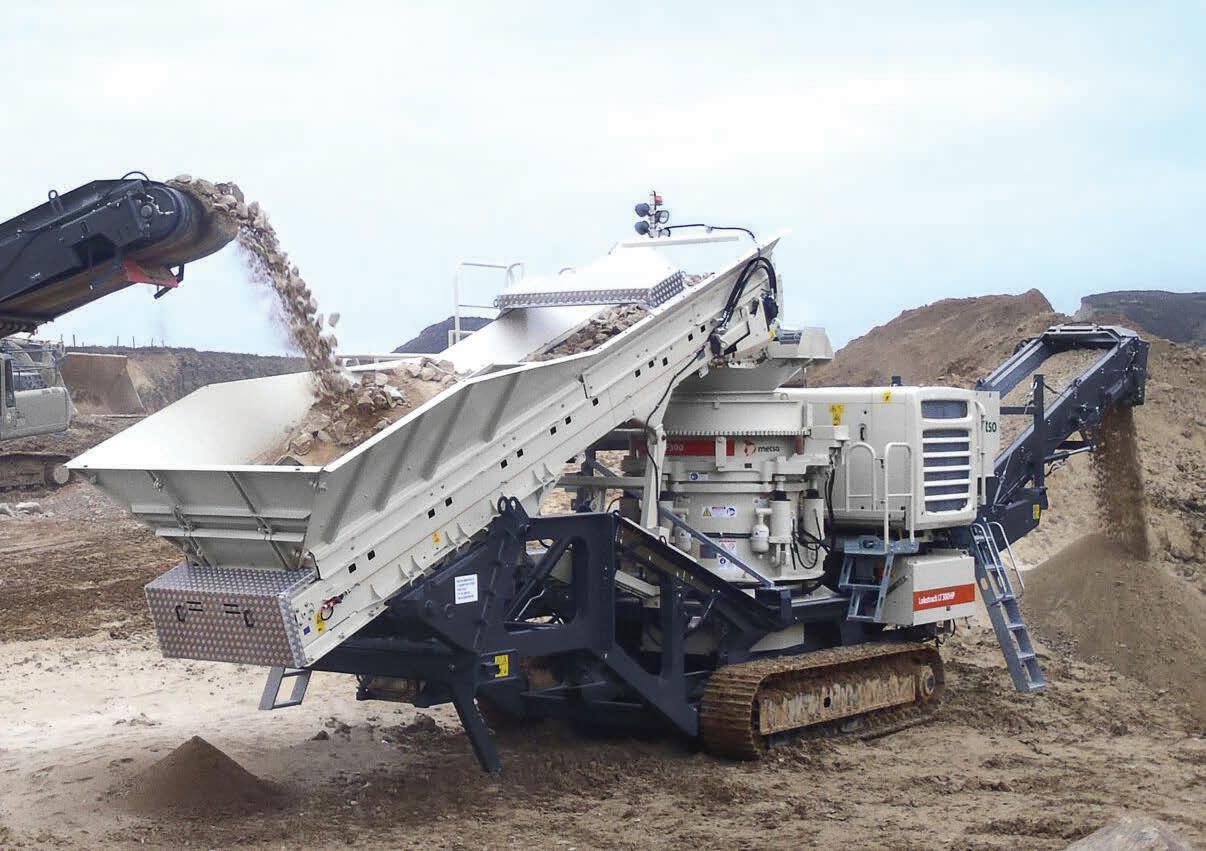
Large cost escalations across multiple project and supply chain pressures have drastically increased the costs of major projects, according to Minister for Infrastructure, Catherine King.
The infrastructure pipeline includes rail and road projects in capital cities nationwide, as well as rail and road construction and upgrades in regional areas.
The government is reportedly keeping the size of the pipeline the same, but with its content changing.
“Delivery of infrastructure is not like a tap. It can’t simply be turned on and off,” Australian Constructors Association chief
executive officer Jon Davies said.
“Developing teams and capabilities that are equipped to bid and deliver large projects can take years, and once assembled, it is difficult to reallocate them, particularly if there is a widespread deferral of projects.
“It is vital that industry is consulted in the review to avoid inflicting further pain on an industry that is already doing it tough as a result of having to absorb significant rises in material and labour costs.”
The government is set to still deliver on election promises and following through on projects now under construction, though noting that many projects never started, and some 160 had a commitment of $5 million or under.
“Australia should have a pipeline of land transport infrastructure projects that are genuinely nation-building, economically sustainable and resilient to our changing climate,” King said.
“Projects were left without adequate funding or resources, projects without real benefits to the public were approved, and
acknowledgment of the number of males who have lost their lives to suicide in Geelong.
“I recently lost a male friend to suicide and my sons mates have lost 3 fathers to suicide, all from the Geelong region,” Breen said.
“I want to ensure we are doing all we can for our staff and industry to prevent and support our workers mental health and create a healthier, positive workplace”
The CCF reports that the civil construction industry has high rates of suicide and mental health problems, with environmental risks such as; work instability, limited job control and a highly masculine culture.

One third of all new WorkCover claims over the next 10 years will be mental health-related and the CCF aims to work with the industry and the industries that support the civil construction industry to address these issues.
the clogged pipeline has caused delays and overruns in important, nation building projects.”
The Australian Constructors Association has said that a steady and transparent pipeline of government infrastructure projects is crucial for the industry to plan and invest for the future, and project cancellations and deferrals undermine this effort.
“If projects are cut, governments must take action to reallocate a proportion of the saved funds to help industry by compensating contractors who have incurred significant additional costs without any fault of their own and currently lack contractual relief,” Davies said.
“It is unethical and uneconomical for a government to pay less for an infrastructure project than its construction cost due to uncontrollable factors like a pandemic or distant war.
“Construction currently accounts for 26 per cent of all business insolvencies in Australia and the implications of these failures on the wider economy are huge.”
16 Quarry June 2023 NEWS
I RECENTLY LOST A MALE FRIEND TO SUICIDE AND MY SONS MATES HAVE LOST 3 FATHERS TO SUICIDE, ALL FROM THE GEELONG REGION
TERENCE BREEN
The Postive Plans - Positive Futures project aims to combat mental health struggles.
Metso Outotec Lokotrack® LT300HP™
HIGH-CAPACITY CRUSHING FOR VERSATILE OR FLEXIBLE FEEDING


Lokotrack LT300HP mobile cone crusher is an efficient and flexible machine for secondary and tertiary stage of high-capacity aggregates production. The versatile HP300 has different cavity options depending on the feed material and end-product requirements. The LT300HP can be equipped with TK feeder, a hanging screen and return conveyor for producing calibrated end product with primary crusher, and can be applied to:
For more information, contact metso@tuttbryant.com.au
Follow us on:



 Road Construction
Railroad Ballast
Asphalt and concrete fractions
Road Construction
Railroad Ballast
Asphalt and concrete fractions
Brisbane | Sydney | Melbourne Adelaide | Perth tuttbryant.com.au 1300 658 888
PRODUCT FOCUS
MAKE AN IMPACT WITH KLEEMANN MOBILE IMPACT CRUSHERS
Kleeman’s MOBIREX EVO2 series mobile impact crushers can be deployed universally and produce high quality product.
The MOBIREX MR 110i EVO2 has a crusher inlet of 1100mm x 800mm and can achieve an impressive, cost-effective production rate. System widths are increased over the entire plant in the direction of material flow. This means that the material flow is not restricted, and material bridging can be effectively avoided.
The continuous feed system makes the operator’s work easier, as the machine automatically regulates a homogeneous material flow, ensuring optimum loading of the crusher.
Thanks to the optional double-deck post screening unit, two classified final products can be produced.
The MOBIREX MR 130i EVO2 has a crusher inlet width of 1300mm x 900mm and achieves a production equivalent with considerably larger crushing plants. Fully hydraulic adjustment of the crushing gap allows the plant to adapt quickly to the material or the desired final grain size. Excellent efficiency and performance are achieved through a variety of technical highlights. Thanks to its compact design, the plants are easy to transport and quick to assemble and disassemble.
Kleemann is continuing development on the MOBIREX mobile impact crushers, which includes the new MOBIREX MR 130(i) Pro.
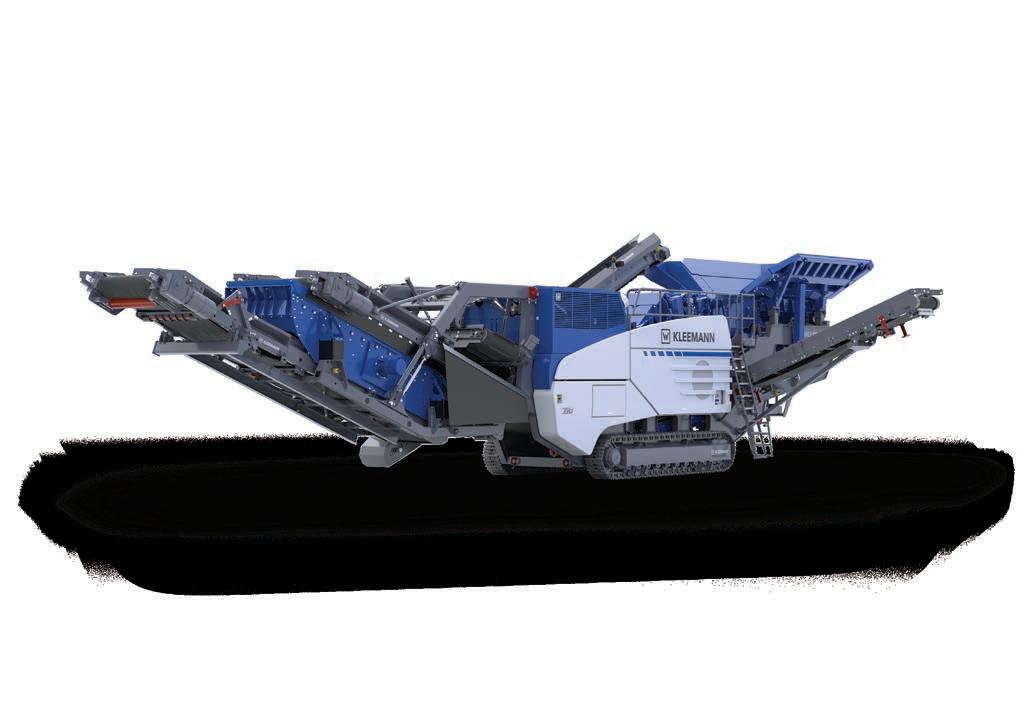
For more information, visit wirtgen-group.com/en-au or contact us directly on 0448 030 420
MTG GROUND ENGAGING TOOLS FROM ONTRAC GROUP
Why should businesses consider the MTG EX Tip profile for their next heavy-duty quarry bucket?
The high level of abrasion resistance and unmatched operational time are two very good reasons.
MTG Systems G.E.T. are of the highest quality and manufactured in Spain.
Beneficial to all MTG teeth, are the hammerless locking features and self-sharpening design, which results in reduced downtime as well as increased productivity.
This is why ONTRAC Group manufactures excavator buckets most commonly with MTG EX tips (other tip profiles may be necessary depending on specific application).
Buckets with the EX tip include ONTRAC’s Premium range, Quarry Range and XMOR®️ High Productivity Range.
ONTRAC Group offers complete MTG Systems solutions, including replacements, refitments and repairs.
For more information, visit ontracgroup.com.au/product-category/ ground-engaging-tools or call 1300 910 950.
HAMMERS FOR HARD WORK
Hammers are widely used in the quarrying and recycling industries. Anping Red Star are able to supply high manganese hammers, as well as alloy carbon steel hammers, for the both quarrying and recycling applications.
With the impact that occurs during quarrying work with high density materials, manganese steel hammers are more commonly used, as they harden during impact to last for longer periods of time.
When it comes to recycling, carbon alloy steel hammers find more use, especially for the scrap shredders.
With the steel refining process and special heat-treatment applied to the hammer as part of production, the hammer is able to obtain a superior hardenability.
Overall, the lifetime of the hammers supplied from Anping Red Star is top of the line and this durability helps to reduce the cost for replacement and repairs for operators.

For details, visit the website, yinghuiinternational.com, or call 0401 459 289

18 Quarry June 2023
CLEAR RECYCLED MATERIALS OF METALS WITH A SMART MAGNET
Quarries across Australia are quickly getting on board with the circular economy revolution, by recycling construction demolition materials and concrete. While this serves as a great area of diversification for quarries, it also comes with the challenge of sorting mixed materials such as metals.
Reinforcement steel and other metals found in construction waste can prove to be damaging for plants, conveyors and screening machines.
To meet this need, Tricon Equipment recommends installing a screening magnet as part of any quarry plant set up. Magnets can be suspended above a conveyor to extract ferrous metals from a conveyed stream of materials.
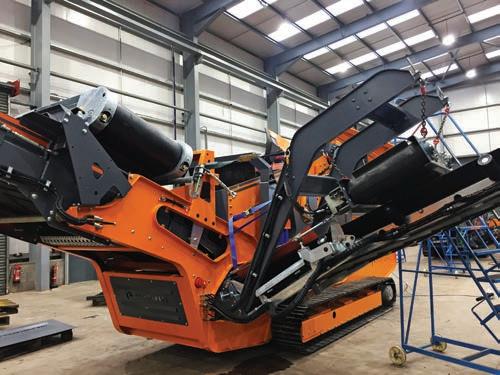
Tricon Equipment stock magnets of all types for all applications. The Conveyortek brand sold by Tricon are some of the most technologically advanced conveyor magnets on the market. With emphasis placed on innovation and efficiency, they are high-strength and performance guaranteed.
The permanent magnet boxes are charged with high strength
Strontium Ferrite Magnetic Material and have the ability the extract ferrous metal from a wide range of belt conveyor applications. They range from as small as 400mm to 1200mm and above.
The range of different strength options will allow you to choose a suitable magnet for your application, taking into consideration, the shape, size and speed of conveyed material, as well as burden depth.
For more information, call Tricon Equipment today on 1300 859 885.
REDUCE
HASSLE-FREE, VERSATILE PUMPING SOLUTIONS
FLO-KWIP Skidrat pontoons from Toolkwip Pumps, are an adaptable floating structure designed for easy positioning, handling and manoeuvring of your most valuable asset.

RAPIDMIX 400CW
Fitted with a self-erecting onboard 40T silo using hydraulics, the Continuous Weight Mobile Pugmill can change from travel mode to fully operational within a few hours. Available with outputs of up to 400 tonnes per hour, the Rapidmix provides feed rates that are fully adjustable for the aggregate, cement and water systems.
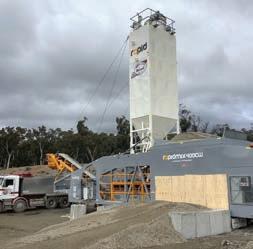

Offering full weighing of all materials, the Rapidmix provides accuracy and accountability you can depend on.

SALES | HIRE | SERVICE | PARTS 1800 182 888 | www.lincom.com.au | sales@lincom.com.au | OFFICE LOCATIONS | QLD | N QLD | HUNTER REGION | NSW | VIC | WA
Our service and support team are on hand to keep your operation running at peak efficiency.
DOWNTIME. INCREASE PRODUCTIVITY.
WORKING WITH PRECISION
As demand surges for construction materials, Precisionscreen’s new gear is helping to redefine an entire range of equipment.


20 Quarry June 2023 WORKING WITH PRECISION
Fixed and mobile crushing and screening were once completely separate, but not anymore.
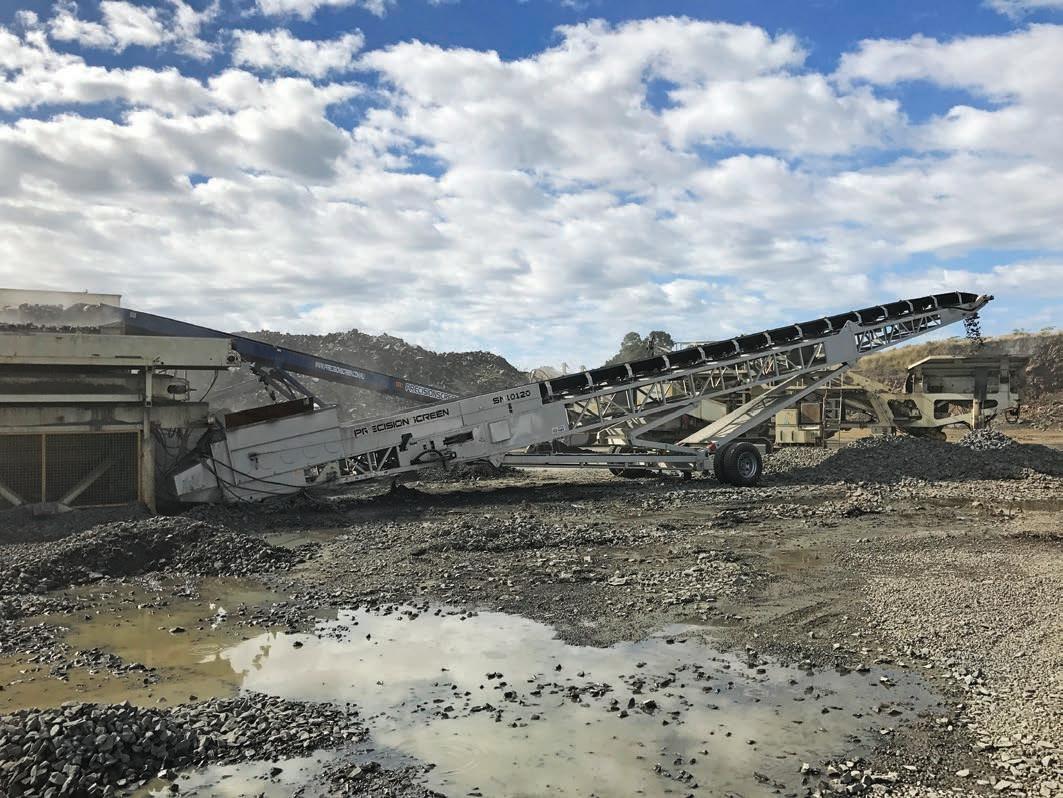

Both kinds of equipment are becoming more and more important as the needs of industry expands.
Finding a way to take advantage of the overlap between mobile and fixed offering is something that Precisionscreen has been laser focused on.
Quarry spoke to chief operations officer of Precisionscreen, Jonny McMurtry, on the development of the modular plant solutions, which he said has been previously overlooked.
“We have seen for a while a gradual increase in operations and applications that need something in-between a mobile and fixed plant for operations,” McMurtry said.
“Obviously we’re not the first company to develop the idea, but we are one of the largest and importantly, we are one of the remaining manufacturers and suppliers of this type of equipment within Australia.”
The company has set its sights on catering to the Australian market. It provides screens, conveyors and screen boxes with a range of power modes, including diesel/ hydraulic options.
“Most of the modular manufacturers come from overseas and more catered towards the
MODULAR PLANTS
A modular plant traditionally acts as a processing plant for medium to long-term crushing and screening jobs.
Precisionscreen’s plants feature standardised, self-contained and portable crushing, screening and feeding stations and conveyor belts that are mounted on static steel work, equipped with automated systems and an independent power source.
They are typically manufactured in large sections that include walkways, motors, drives and other components.
“We’ve done 10x5, 12x5 and 20x5’ screen boxes on a modular frame before,” McMurtry said. “Now what we’re looking to do is to put 20x6, 20x7 and 20x8’ screenboxes on modular plants.”
The Screenboxes from Precisionscreen are contained screening units, that can be anywhere between two decked to quad decked and come in a variety of sizes, with custom sizing options available on request.
One of the main reasons the company has moved towards modular plant is its desire for the modular plant to integrate with our Australian-designed and manufactured stockpilers, recognised by the Australian Made campaign.
Screenboxes in a modular plant are set to interact with the SM1090 80ft conveyor and

“If they’re looking for high production, which normally would require purchasing fixed systems or expensive tracked machines, we can instead offer a modular solution, which we’ve catered and designed to work with existing conveyors or screening systems the customer might already have on site. “We can adapt and adjust based on what exactly the customer wants, to deliver a solution which is uniquely suited for their operation.”
RELIABILITY
Disruptions to supply chains and protracted shipping times are impacting the industry globally. With these challenges, reliability has become a key factor when it comes to selecting screen equipment.
Bottlenecks in any part of processing causes sunk costs further in the value chain and those problems are precisely what McMurtry said Precisionscreen wants to help customers avoid.
“Oftentimes in Australia there’s not the infrastructure available at most sites where this equipment is going to be to used, to make it 100 per cent usable all the time if it were solely electric,” McMurtry said.
“We’re just finding that there’s still a demand for high powered hydraulic options; while we recognise the growth of hybrid drives, we’re also starting to see things swing the other way based on businesses who need to ensure that they are hitting their production numbers.”
As a local manufacturer, Precisionscreen can avoid some of the worse delays involved in international manufacturing.
Although fuel prices are continuing to drive upwards, McMurtry said that many customers across Australia are opting for diesel hydraulic drive systems, for the peace of mind in making sure production is always happening.
Producing in-house diesel and hydraulic drive units for equipment, along with the modularity of the plants, allows Precisionscreen to work with the power systems that are already in place, providing the best outcome for operators.
“At the end of the day, we are willing to work with customers to give them the solution that is best for them and what their work requires.”
Precisionscreen understands that some customers may have to operate these machines in remote locations and as such, may be at risk of extended downtime periods due to malfunctions.
To enable those operations to be independent, the internal components of the modular screens – from the bearings to rollers and even drive components – are OEM agnostic and can be sourced and replaced locally.
“We’re also only a phone call away if customers do need some assistance or guidance on what the right parts are or what they might need for the machines,” McMurtry said.
“Everything can also be directly order from the Brisbane factory, as we stock and supply everything that’s fitted on these machines because the machines are fully designed and manufactured in Brisbane also.”
Adjustments, modifications, or improvements that customers want down the track, are all made doable through the fact that Precisionscreen designs and manufactures screens, conveyors and crushers to Australian Standards, in Australia.
MODULAR CRUSHING
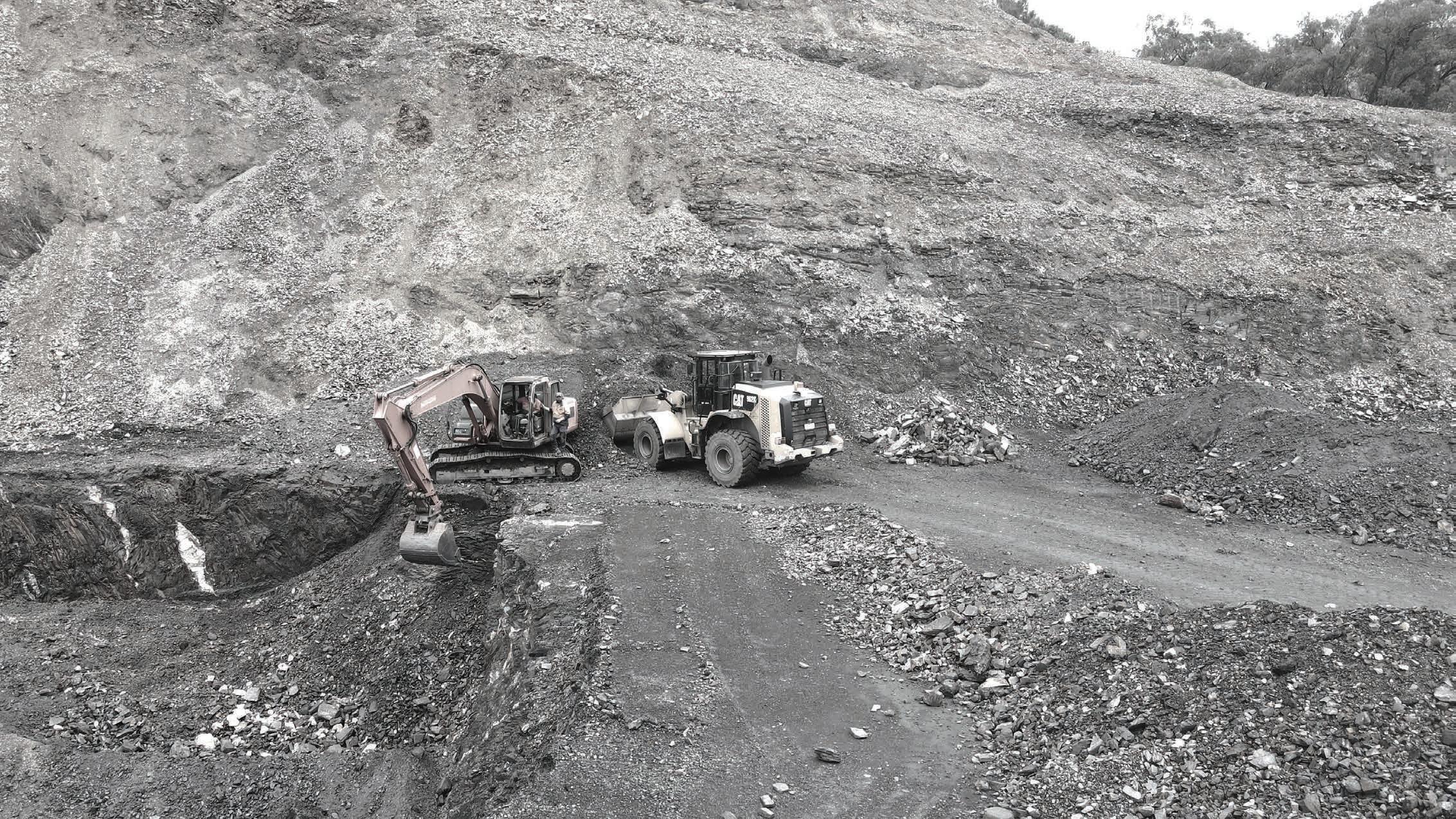
To work in tandem with the modular screening plants, Precisionscreen has a modular crushing range in the works.
Focusing on the tertiary crusher range, in VSI and cone crushers, the modular crushing systems will follow in suit with the modular screening plant set ups. They will be mainly diesel hydraulic powered and not mounted on tracks, enabling them to be moved easily into future operations.
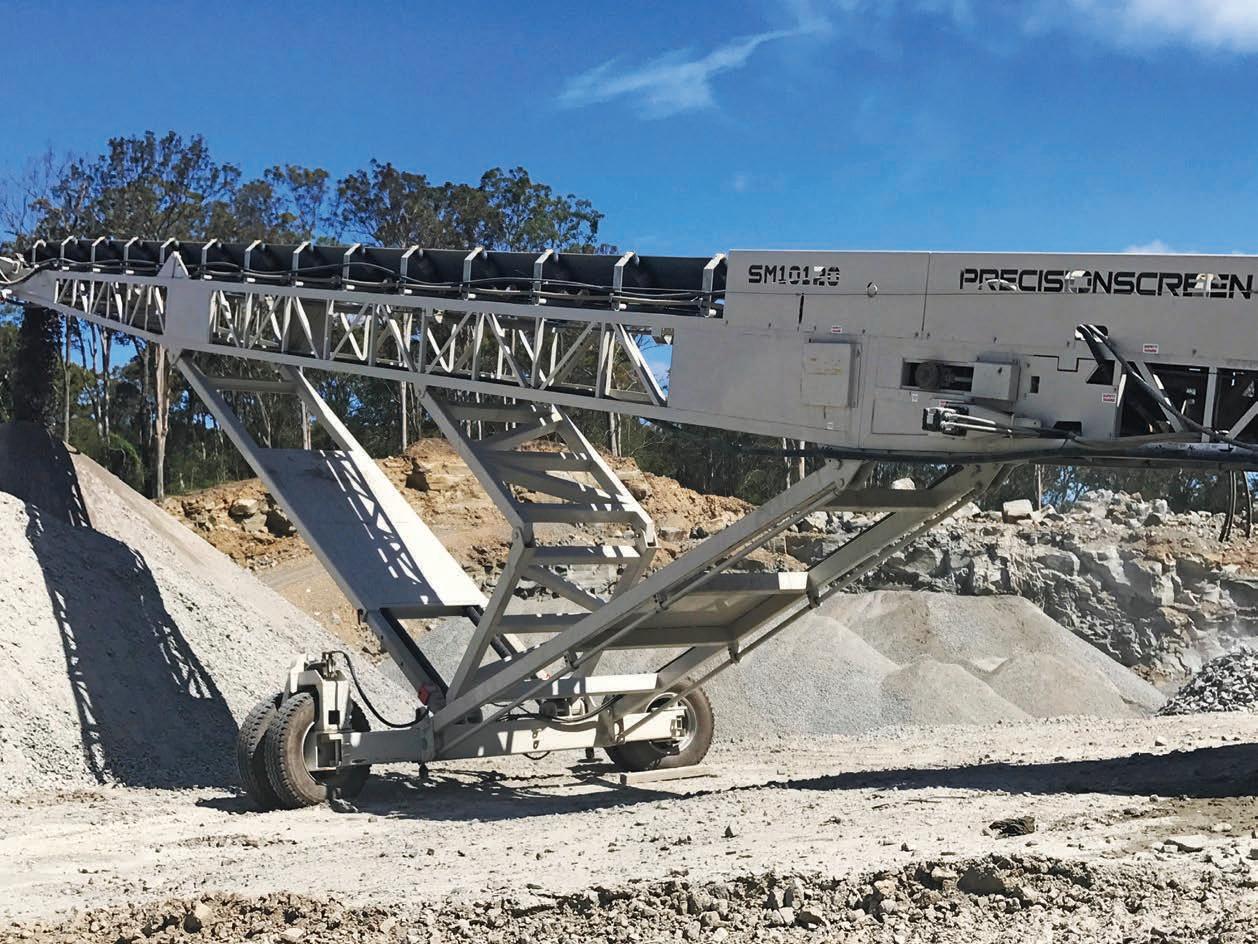
“We know there’s a massive shortage for this style of equipment, so we’re looking to provide a solution which fills that missing niche in the Australian market,” McMurtry said.
“We’ve been in the market for 38 years, which means we possess a lot of knowledge in regard to the best way to operate these hydraulic systems on diesel or hybrid engines.” •
Visit precisionscreen.com.au to learn more.
22 Quarry June 2023
WORKING WITH PRECISION
The SM10120 works with the Modular Screening Plants from Precisionscreen.

The World's Fastest Hydraulic Hose Repair INCREASE YOUR HYDRAULIC UPTIME WITH BOA HYDRAULICS. boahydraulics.com ARE YOU SICK OF WAITING FOR HOSE REPAIRS?
SUPPORTING QUARRY SUSTAINABILITY
Working with the extractive industries to meet best practice across the board, Eltirus connects and works with quarries to ensure sustainable operations.

Know what’s in the ground, extract it viably and ensure compliance is the core belief that Eltirus maintains.
Understanding the material that is being extracted, in addition to having access to data across all aspects of operations, is core to the success of the quarry industry. Quarry Magazine had the chance to sit down with technical service manager from Eltirus, Jackie Gauntlett, to discuss in detail the services provided by Eltirus and how the ideal of “know what’s in the ground, extract it viably, and ensure compliance”, is put into practice.
What are the main services that Eltirus provides?
Eltirus aims to provide all key technical services that a quarry requires across the
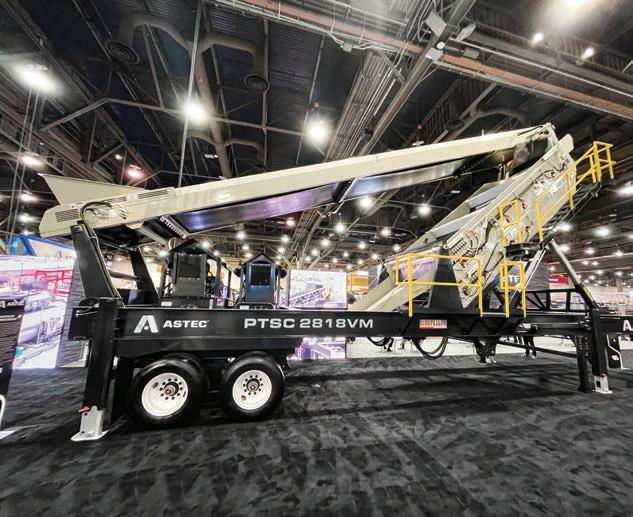
development, operational, and closure pipeline – specifically for quarry operations.
This includes resource assessment, such as drilling and geological modelling, survey support through drone topographic data imagery and machine guidance, strategic quarry planning, operational support through short term planning to meet sales and targets, KPI monitoring, and rehabilitation and closure support.
We also provide support with regards to geotechnical assessments, to help ensure that a safe pit design is implemented.
This broad array of responsibilities is facilitated through our highly skilled professionals, who are experts in their specific field and give the best solutions and advice to our clients.
What does your role within Eltirus entail?
Primarily, my role is to ensure that clients are happy.
As technical services manager, I ensure that we really understand what the client requires and that our outputs are truly valuable. Our work is often cross-disciplinary, and as such, it requires that all technical functions work seamless towards the same goal to ensure that projects are completed optimally and efficiently.
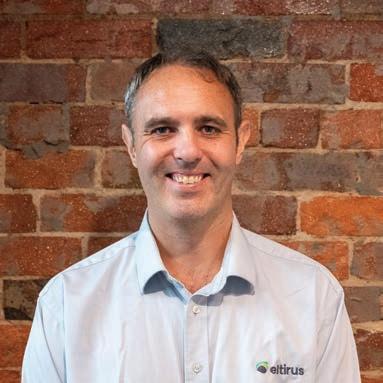
Why should companies be looking towards sustainable solutions?
Simply put it’s all about risk management. If operations adequately manage all business risks – from economic risk, resource risk, safety risk, social risk and environmental
24 Quarry June 2023 SURVEYORS
Jackie Gauntlett, technical service manager at Eltirus.
Eltirus has the tools to help businesses understand what is in the ground and how to extract it sustainably.
risk - you’re likely to have a sustainable business. Sustainable means success over the long term. It means a safe operation with which stakeholders - including employees, shareholder and the community - are proud to be affiliated with.
This is a tough ask – but an essential one to get right if you truly want to be sustainable.
An active pursuit of sustainability is important, as without long term foresight it becomes very likely that an operation will not remain sustainable.
This means truly understanding your resource and how it can be maximised over the long term, understanding and managing your operational risks and managing and maintaining your social and environmental license to operate.
Licence distributors also may prefer to issue licenses to operate to those businesses who can show a track record of undertaking the long-term view to success.
What are some of the technologies, products, and solutions that Eltirus utilises to provide in-depth information to stakeholders?
It’s important for us that our clients have access to information to make the best operational and strategic decisions possible. We’ve built our business with this in mind and have worked with or partnered with service providers to ensure we have the best tools available to enable this effective data and information sharing.
We use Stratus to host survey informationsuch as drone topography and imagery – and the technology is available for a client to use at any time to inform their decision making.
Stratus is also a powerful collaboration tool where we can share design data with the client in a 3D space, or review how an operation is progressing through a welldefined plan.
We use Seequent Central to empower
clients to have access to their geological data in a 3D environment – to truly understand their resource model and drilling data in spatial context.

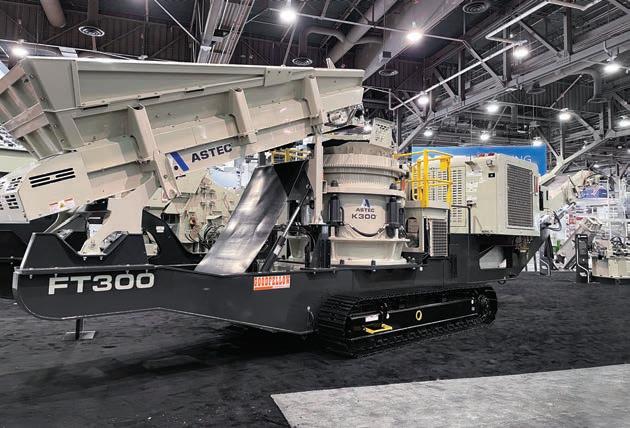

This drilling and geological data is expensive to obtain and highly valuable – it’s the belief of Eltirus that it should be accessible.
For key clients we host and maintain a secure online portal where all the client’s key documentation can be readily accessed.
We also have recently begun rolling out a tool called Enable, which is able to collate data from a variety of sources and display it in online dashboards for managers and executives to have live insight into their operation.
This data can be tailored to the individual, for example, detailed daily data for quarry managers, or high-level quarterly KPIs for executives.
BUILT TO CONNECT Next Gen FT300-OC Mobile Cone Plant Features the proven Kodiac K300+. Customer-focused innovation. Enhanced safety features. Now includes our Trac10 ® Control System. PTSC2818Vm Portable HF Screen Plant Widest HF Screen on the market at 8’. Ideal for high moisture levels, sticky materials, fines separation. Also available for FIXED PLANT installations. 1300 278 322 enquires.australia@astecindustries.com astecindustries.com JUST LAUNCHED! NEW ADDITIONS TO OUR MOBILE RANGE
In your experience are businesses actively looking for opportunities to increase sustainability related outcomes?
We’ve noticed a change in the way businesses approach ESG and long-term quarry sustainability.
We’re fortunate in that our business generally appeals to operators who are actively working towards a truly sustainable operation – giving us perhaps a biased view of the industry.
However, there are still some operators with their heads in the sand – hoping that the bare minimum will suffice. These operators are possibly risking leaving their operations without a sustainable long term strategy.
Understanding that actively pursuing sustainable opportunities is much more likely to pay off in the long run than not, is something we would be glad to see the wider industry adopt.
The mining industry has generally been much more regulated than the quarry industry and I believe that the same level of best-practice currently practiced within the mining industry will soon be expected in the quarrying industry.
This is a major challenge, and at Eltirus we’ve positioned ourselves to be able to assist the quarry operators who realise this and want to get a head start.
What are some of the biggest concerns or problems currently for the quarrying industry?

Obtaining and maintaining a social and environmental licenses to operate is a major challenge. Having a good, detailed, and realistic long term plan, coupled with interacting and building strong connections with the local areas and communities can help to ensure the longevity of operations. Additionally, there’s greater regulation with respect to access of capital, such as requiring resource and reserves to be determined in accordance with the JORC code and having a well-defined and detailed long term extraction plan to show viability.
There is a definite trend towards greater regulation with respect to safe geotechnical assessments and realistic rehabilitation and closure plans. These need to be completed by independent and competent third parties who truly understand the industry.
We have also realised that the transition to electric and automated D&B and L&H systems will be challenging, requiring operations to have access to the right technical support throughout the project life.
Accessing additional resource to keep up with demand is also something which can pose difficulties for operators. It is critical to understand when, and how much, to invest
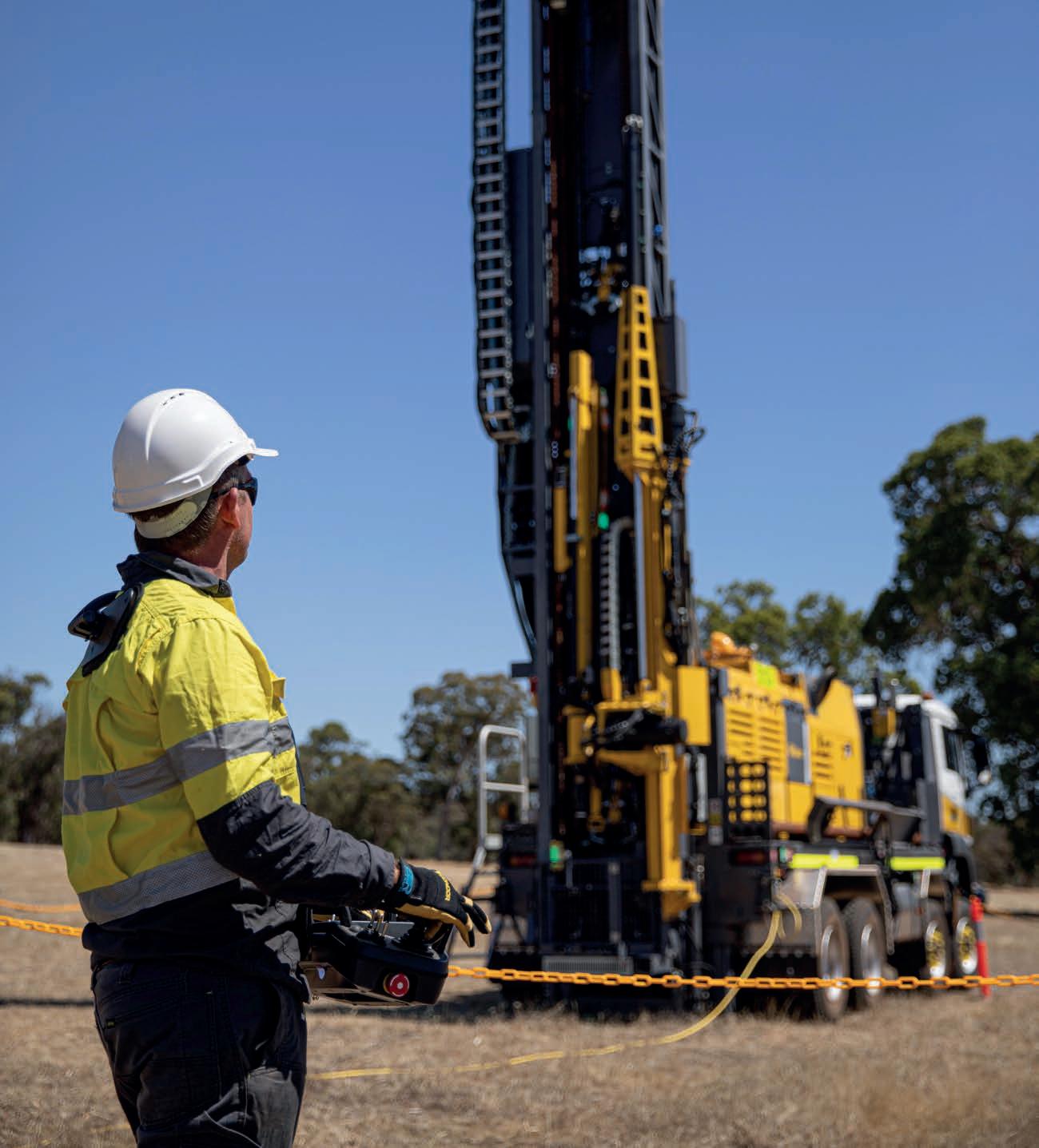
in an development opportunity, and this requires a good technical knowledge of the opportunity and its risks.
How does Eltirus help businesses to navigate those concerns?
Accessing additional resource and maintaining social and environmental license to operate is more likely to succeed when regulators are presented with a detailed plan which mitigates against an operation not being sustainable in the long run.
Our professional team consists of registered surveyors, AusIMM chartered professional geologists, and RPEQ certified mining and geotechnical engineers. We are thus positioned to undertake due diligence requirements in resource and geotechnical assessment, extraction planning, and rehabilitation and closure planning.
Eltirus has begun engaging with key stakeholders with regards to the transition to electric and automated operations, as this transition is a key risk for operators and likely to be significantly more challenging than expected.
Eltirus is currently setting up to be positioned to assist with this key sustainability transition when it comes – which is probably sooner than expected. •
Visit
26 Quarry June 2023
SURVEYORS
eltirus.com for more information.
The company also provides support with geotechnical assessments.
Optimisation, safety, and quality
United. Inspired. Process Automation Solutions
With our portfolio of process automation solutions, our mission is to continually progress the drilling part of the value chain seeking optimisation, safety, and quality. Our solutions range from remote control operations, to fully autonomous drilling, real-time data tracking, and a series of specialised data management tools that increase safety and productivity in your operations and allow for smart data-driven decisions that fuel profitability and minimise the total cost of ownership.


epiroc.com/en-au
UNBLOCK THE ROCK
Amajor Victorian quarry has installed a unique solution to eliminate clogged screens.
Building is booming in Victoria, with several multi-billion mega-projects and state government investment into new housing.
The Victorian Skills Authority’s Construction Industry Insight found in October 2022, that while substantial investment through government initiatives was fuelling the growth, ongoing supply chain disruptions and material shortages are likely to remain a challenge.
One Victorian quarry produces and distributes aggregates, road base and other materials to a wide range of customers in the construction industry for road surfacing, concreting, railway applications and general landscaping.
However, due to the high moisture content and fine particles in the material being screened, blinding and clogging issues began to occur within the quarry’s multistorey screening facility.
Screening machines are designed to separate and sort the various types of conveyed rock material. Feed material that didn’t flow and filter through easily would start to accumulate layer by layer and overflow onto the sides of the screens. The clogging issue was further dampened during wet and humid weather.
The blinding of the screens reduced
screening efficiency, increased downtime, and increased maintenance costs.

The quarry manager attempted to solve the issue a rubber block attached to rope. Daily manual adjustment and intensive block shaking was required to unclog feed material.

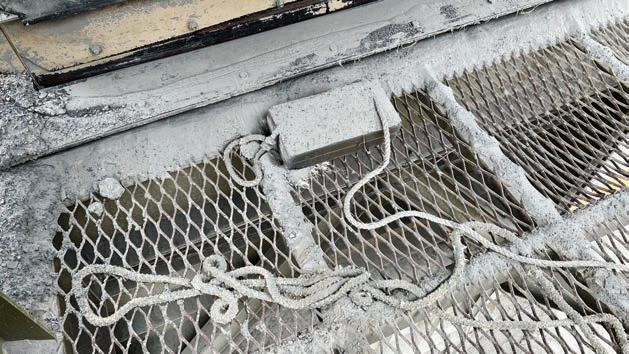
Tired of this time consuming and labourintensive process, the quarry manager reached out to Kinder Australia, which recommended a cost-effective solution to effectively eliminate blinding and stem further product loss.
Kinder’s field application specialist encouraged the quarry to install the company’s K-Deblinding Rods to improve the efficiency of its screening operations. The system was demonstrated during an onsite meeting with the quarry maintenance team and was later approved for installation within the multi-storey screening facility.
The K-Deblinding Rod solution is designed to eliminate blinding in screening applications. The rods are made of highquality polyurethane and are placed on the screening surface, where they vibrate at a high frequency to prevent material from sticking to the surface.
Installation of the K-Deblinding Rods was straight forward. Kinder’s technical team worked closely with the maintenance team to ensure a seamless integration of the solution with minimal impact to the production process.
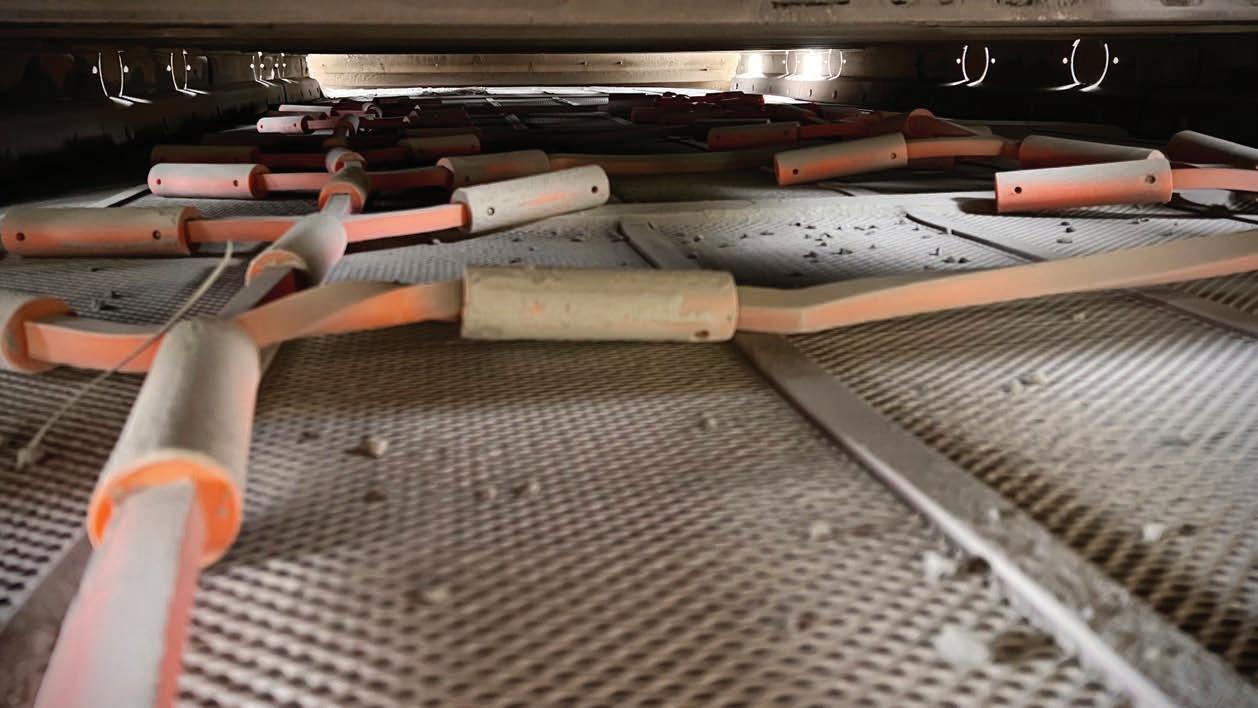
Only two of anchor points were drilled
to the attached application assembly, taking no more than 30 minutes all up. The team installed the rods on the screening machines and provided training to the company’s personnel on the proper use and maintenance of the equipment.
The quarry manager found the K-Deblinding Rods made a positive impact on the company’s operations, with production now stabilising.
The K-Deblinding Rods are a ‘set and forget’ solution that eliminates blinding on the screening machines, without fuss.
The quarry also reported a significant reduction in maintenance costs, with less time to dedicated to making daily manual adjustments and attending to the screens.
Tim Storer, Kinder field applications specialist, said the quarry continually maintains the highest standards of quality, efficiency, and safety in all its operations.
“The installation of Kinder’s K-Deblinding Rods at this Quarry is a true success story, with further discussions on implementing a similar screening solution in the quarry’s other Victorian operation,” he said.
“The solution provided an effective and efficient way to eliminate blinding on the screening machines, resulting in improved efficiency, reduced downtime, and improved product quality.” •
Visit kinder.com.au to learn more.
28 Quarry June 2023 SCREENS

NEW CAT EXCAVATOR FOR THE BIG JOBS
Caterpillar has unveiled a new hydraulic excavator which combines more power and a heavier counterweight to work with larger tools.
Quarrying is a tough job. Not all equipment can handle the arduous task of moving tonnes upon tonnes of material day in day out.
That’s why Caterpillar has designed the Cat 352 Hydraulic Excavator.

Brian Abbott, Caterpillar global product manager for large hydraulic excavators, said the machine has been built for big jobs and delivers unmatched performance in its size class.
“It can be equipped with high-capacity buckets to dig and load tonnes of material in fewer passes or large hammers to work in demanding quarry applications,” he said.

The robust engine power (330kW for Tier 4F, 303kW for Tier 3) and electrohydraulic system allows the 352 to power through difficult materials. Auto dig boost increases bucket penetration by 8 per cent when encountering resistance in the cut, and auto heavy lift increases lift capacity by 8 per cent, which comes in handy when picking up heavy loads like sandboxes and
pipe. Auxiliary hydraulic options allow the use of a wide range of Cat attachments for greater versatility.
Three engine modes match excavator power to the demands of the job. Smart mode automatically matches engine and hydraulic power to digging conditions to lower fuel consumption. Power mode delivers maximum power to meet the most demanding tasks. Eco mode reduces engine speed to a constant 1500 rpm to minimise fuel consumption.

Smart technology has been incorporated into the excavator, which has the potential to boost productivity by up to 45 per cent. Cat 2D Grade indicates depth and slope on the in-cab monitor with auditory alerts, while standard Cat Grade Assist allows the excavator to stay on grade with singlelever digging.
Higher level offerings allow users to create and edit designs and efficiently complete more complex grading applications. All Cat Grade systems are compatible with radios and base stations from top third-party technology suppliers.
Operators can store up to four depth and slope offsets to quickly cut to grade without a grade checker. Providing real-time weight estimates without swinging the boom, Cat Payload on-board weighing helps achieve precise payload targets to improve operating efficiency. It can be combined with VisionLink to remotely manage production targets.
Cat Swing Assist automatically stops excavator swing at operator-defined setpoints in truck loading and trenching applications, increasing safety, and conserving fuel. Auto hammer stop warns operators after 15 seconds of continuous firing and then shuts off the hammer after 30 seconds to prevent unnecessary wear and tear.
The 352 Excavator comes with either a fixed or variable gauge undercarriage. The variable gauge undercarriage retracts to a 2390mm width, making it much easier to transport. When expanded, it is 150mm wider than the fixed gauge undercarriage for greater stability.
Different cab trim level options are available with features like heated and air-suspension seats. They each have a tilt-up left-hand console for easier access in and out of the machine. The 352 features keyless pushbutton start with an available Bluetooth key fob. Operators can also ignite the engine through an operator ID passcode.

The 352 remains reliable in virtually any environment, with a high ambient temperature capability of 52˚ C, cold-start capability at -18˚ C and can work at up to 4500m above sea level.
Remote troubleshoot and remote flash let dealers connect with the machine before traveling to a jobsite to diagnose fault codes and update operating software. The system can also automatically collect vital machine operating information like location, hours, fuel usage, idle time, maintenance alerts, diagnostic codes, and machine health and share it through web and mobile applications.
The air intake filter with pre-cleaner features high dust capacity, and a high-efficiency hydraulic fan cools the engine on demand to reduce fuel consumption. Long-life fuel, oil, and air filters combine with synchronized 1000-hour oil and fuel filter service intervals to reduce downtime. The extended intervals eliminate labour cost for nine oil and fuel filter changes and parts cost for 27 oil and fuel filters over 10,000 machine operating hours compared to many competitive models in its class. •
30 Quarry June 2023 EXCAVATORS
Visit cat.com to learn more.
The 352 excavator can be equipped with high-capacity buckets.
Different cab trim level options are available with features like heated and air-suspension seats.






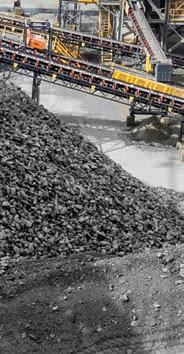
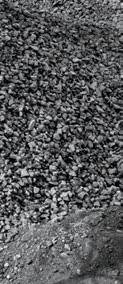







A LOOK INSIDE TEREX’S WASHING PLANTS
Terex Washing Systems’ washing plant is helping a third-generation company feed sand and gravel products to concrete sites in Cork, Ireland.
Keohane Readymix’s plant in the Irish county of Cork processes natural sand and gravel deposits. The material, while fairly free-flowing, can get sticky and contain clay or organics like roots.
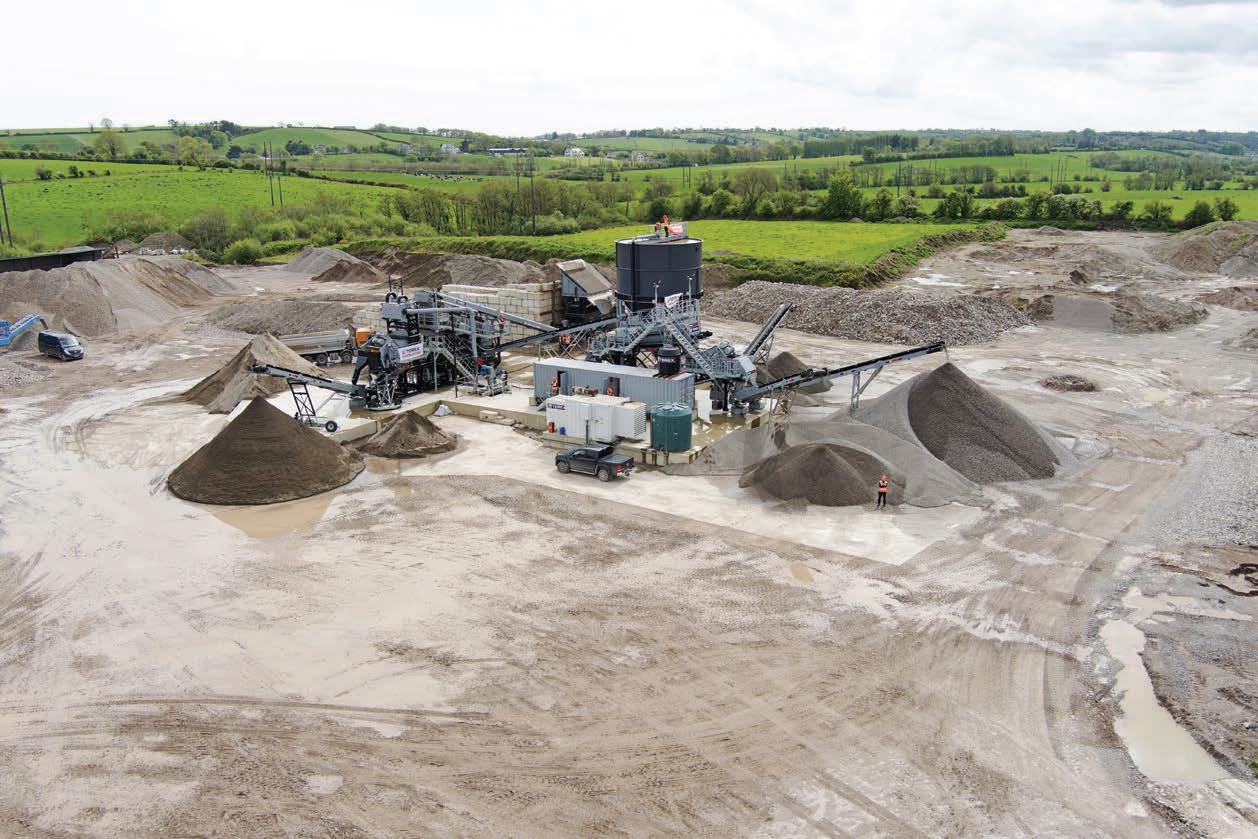
The feed material is 60:40 sand to gravel, predominantly minus 150mm but can be up to 300-400mm.
Keohane’s old wash plant was worn out, and they needed a new installation that could handle their unique requirements.
Terex Washing Systems (TWS) was selected to design the plant and began to analyse a sample of Keohane’s as-dug material and used this to propose the plant’s design.
Terex Washing Systems designs and manufactures a range of feeders, from H9 to H30, including static grids available in multiple spacings. The hopper volume of the H30 is 30m3 with an internal breaker bar to relieve the load on the belt. The feeder’s heavy-duty 1050mm wide belt is supported by impact rollers and is driven by a direct drive gearbox with variable speed control.
The Aggresand 206 is an integrated sand washing plant with a main conveyor powered by dual 11W electric motor and gearbox combinations, with alignment rollers to keep the belt centred and prevent belt damage. The main conveyor transfers material from the feeder to the main rinsing screen, where it is rinsed and screened on all three decks with polyurethane media, X spraybars, and ball valves. The rolling chute, a popular design feature on the Aggresand 206, splits
the aggregates into three products, and a simple flip of the blending plate can blend mid-overs and mid-fines into a single product.
The ring-main controls the water delivery, and the washbox, which briefly contains the feed material while introducing a high volume of water to fluidise the sand and gravel, is key to maximising the rinsing screen’s performance. The high-capacity sealed washbox is supplied with water independently controlled for volume.
The Aggresand has been designed with multiple valves that allow the drainage of the complete water system at the end of each day, preventing frost pockets that can cause blockages and damage.
20 x 6 SCREEN
This rinsing screen is a 20x6 three-deck box. Powered by a single 22kW electric motor, it operates at a fixed angle of 18°, ensuring optimal speed and throw for effective screening across all three decks. The screen is equipped with spraybars on each deck, which have staggered nozzle patterns to ensure efficient rinsing of all material. The spraybars feature individual ball valves that can be shut off as needed, with each spraybar being statically mounted to increase its lifespan and prevent additional weight and stresses on the screenbox.
Polyurethane media is used on all three decks, providing maximum wear life in washing applications. The screen is designed to wash sand through the bottom deck, with
three different aggregate sizes being collected at the end of the screen and directed to a rolling chute. The rolling chute can be used to split the aggregate into three products, with oversize material going over the top, mid-overs going over the middle section, and midfines dropping into the closest chute to the screen. Alternatively, the mid-overs and mid-fines can be blended into a single product by flipping a blending plate. The oversize product can also be blended by repositioning the plates at the end of the chute.

The screen’s roll-away chute provides access to the discharge end of the screenbox, with a drop-in, lightweight flooring providing a safe platform for inspection and maintenance. Keohane is currently running the screen with 55mm apertures on the top deck, 24mm apertures on the middle deck, and a split of 2mm and 5mm on the first and second sections of the bottom deck to produce two grades of sand. The oversize material is directed to a stockpile at the back, while the mid-overs are discharged to the right. The 5mm-24mm aggregate is transferred via an extended conveyor to the AggreScrub 150.
MAIN COLLECTION SUMP TANK
The main collection sump tank is one of the critical components of the plant. Its primary function is to collect the water used in the washing process and provide a central point for the collection of fluidised fine material. Water from the wash plant flows into the sump tank.
32 Quarry June 2023 WASHING
Terex Washing Systems was selected to design Keohane’s plant.
UNDERGROUND WATER STORAGE
Unique for Keohane, the reservoir for recycled water used in the wash plant is located beneath the plinth to safe footprint on the overall layout. The water recycling system employed reduces the amount of freshwater required for the operation. This subterranean tank helps to maintain the proper balance of water in the system and prevents overflow during heavy rain or excessive water use.
PUMPS AND MAINTENANCE
Two types of pumps are used for handling sand and water – coarse sand pumps and fine sand pumps.
Typically, the pumps used in a wash plant are natural red rubber-lined to provide resistance against abrasive wear and tear caused by the sand particles. Terex has lined all the pipework to protect against wear and tear from the abrasive nature of the sand particles. The lining is a wear resistant rubber that can withstand the harsh conditions of the wash plant environment.


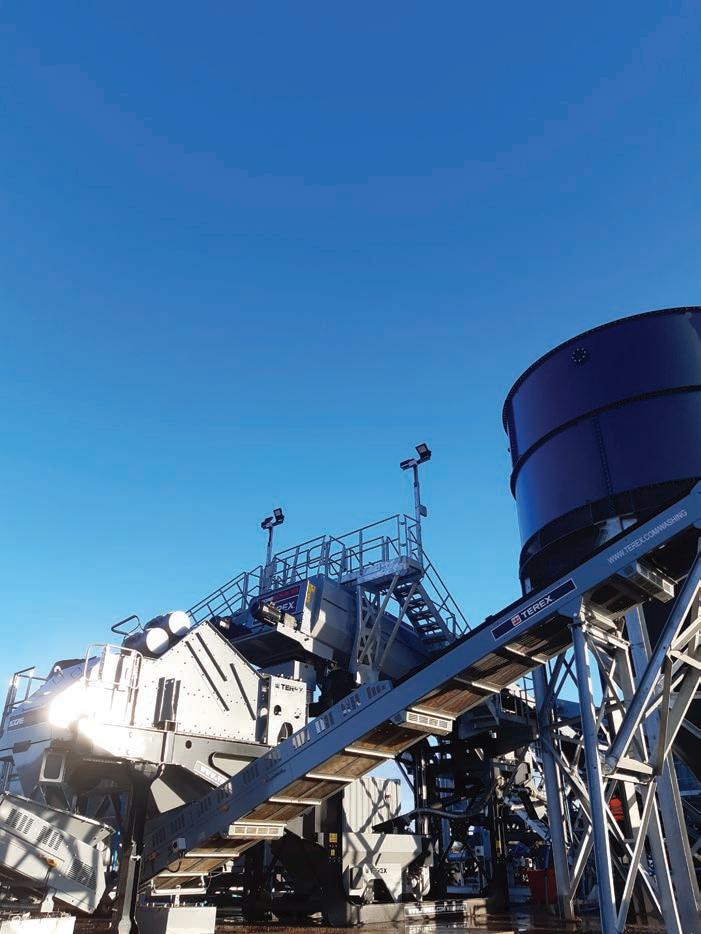 Terex Washing Systems designs and manufactures a range of feeders.
Terex Washing Systems designs and manufactures a range of feeders.
Regular maintenance of pumps is crucial to ensure their smooth operation and prevent breakdowns that can cause production downtime. During maintenance, the pumps are rolled out of their positions, dismantled, and inspected for any signs of wear and tear. Worn parts are replaced, and the pumps are reassembled, aligned, and reinstalled back into position.
CYCLONES AND UNDERFLOW BLENDING
The sand and water slurry is pumped to two rubber lined cyclones. The larger 660 Cyclone receives the higher volume coarse fraction, while the 500 Cyclone receives the lower volume 0-2mm fraction. Inside the cyclones, silts and clays are separated from the sand and discharged out the top of the cyclone, while the in-spec sand is discharged via the spigot into the underflow collection box.
Easy access lids allow for visual inspection of the umbrella flow out the bottom of the cyclone. A simple blending box within the main underflow box provides a second opportunity to blend fine sand into the coarse sand.
SAND DEWATERING SCREEN
The sand is then discharged onto a 14x6 high frequency dewatering screen, which uses polyurethane media and dividers to keep the material apart the entire length of the
screen. By the time the sand reaches the end, the moisture content has been reduced to below 14 per cent. The dewatering screen’s underflow is returned to the central collection sump for maximum recovery of fines.
TWS designed a custom lined chute for Keohane’s site to use one standard radial conveyor for the fine fraction, and a radial conveyor for the higher volume 0-5mm sand. This chute provides the third and final opportunity for the Keohane to blend some of the fine sand into the coarse sand.
All dirty water reporting out the top of the cyclones is collected and discharged into the ground collection sump.
SCRUBBING
When there is a high concentration of silts and clays in the feed material, the aggregates can bind together, making it difficult to remove the clay through washing alone. The material analysis completed during the initial proposal stage determined that scrubbing of the material was required.
Scrubbing involves a process of stoneon-stone attrition, which breaks down conglomerates and frees the aggregates. TWS washers are designed to handle a feed rate of 60 to 200 tonnes per hour and produce a clean and marketable aggregate. The AS150 version is modular and can be

easily transported and assembled. It comes equipped with a part-rinsing sizing screen, a high-volume trash screen, and a central collection sump, and offers easy access to all serviceable areas.
In this specific application, most of the conglomerates are found in the mid fines portion. The stock is diverted to the AS150 via the Aggresand extended conveyor. The challenge is to then liberate valuable aggregates and light material, such as organics or trash, from difficult-to-break-down fines and insoluble clay.
The Aggrescrub range features twin rotating bladed shafts with two dedicated motor gearboxes that introduce energy to the feedstock, causing the particles to collide and scrape against each other. This stone-on-stone attrition liberates conglomerates, which are transported across the water and expelled out of the rear weirs, and onto the trash screen where they are dewatered. The water then travels to the integrated sump tank.
As the aggregate exits the hull, it receives a final rinse to remove any 0-5mm carry over, and this is sent to the integrated sump. All the water used in the scrubbing process is contained in a closed loop, and the dirty water is collected in the integral sump. From here, it is pumped back along the extended conveyor to the Aggresand sump, where it enters the
34 Quarry June 2023
WASHING
Terex provided a full turnkey solution that leveraged its wide product portfolio.
sand washing process. What remains is a pile of clean, marketable aggregate in distinct-sized stockpiles and a neat pile of trash and organics.

FLOCCULANT DOSING UNIT
The plant uses an FDU3000 flocculent dosing unit. The 3000-litre capacity unit is a stainlesssteel construction split into three separate tanks, a mixing tank, maturing tank and storage tank.
During flocculant preparation clean potable water is pumped from a water storage tank situated outside the control room. Simultaneously dry flocculant powder is fed into the pressurised water entering the mixing tank flow by an auger mounted in the flocculant hopper. The flocculant solution is then thoroughly mixed using a mixer in the mixing tank.
Premixed flocculant is displaced and overflows from the mixing tank into the maturing tank via a weir, where it is further mixed and allowed to mature for between 45 -60 minutes.
Flocculant in the storage tank is then pumped via a mono pump into the slurry feed pipeline just before the static mixer, where it thoroughly mixed with the slurry feed, before entering the thickener.
The settling rate of the solids within the slurry are continuously monitored
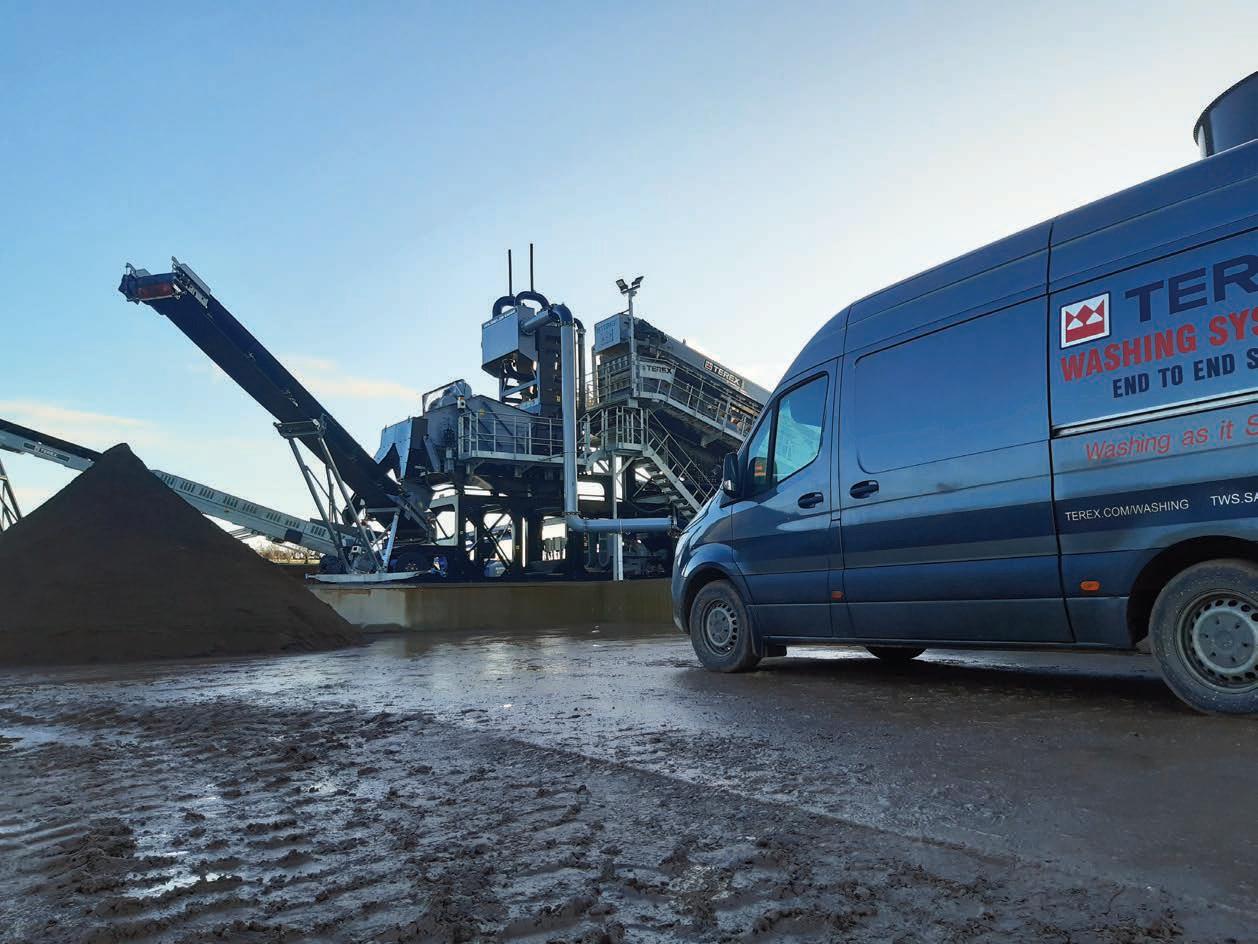
automatically by the dosing control unit. This allows the control panel to monitor and adjust the amount of flocculant used and therefore optimise consumption.
DEEP CONE THICKENER
This is where the dirty water, now dosed with flocculant, enters into the centre feed well. Immediately the floc begins working, causing the particles of silt and clay to bind together and sink to the bottom of the DC220. Here the clarified water weirs over the troughs and is channelled into a below ground water storage tank. The thickened sludge is compressed in the deep cone and the volume of sludge in the thickener is controlled via this sensor. When the level reaches its set point the sensor sends a signal to the control system which automatically opens the discharge valve. The thickened sludge is then transferred to the pond under gravity. A key advantage of the deep cone thickener is not requiring a sludge pump. The sludge can also reach a higher solids ratio, on average 50 per cent solids, meaning that a greater level of water in recovered. TWS installed flush out points at the exit position of the deep cone to allow the operator to easily flush out any blockages safely and quickly.
The thickened sludge is piped to the settlement ponds where is contained and easier to handle.
CENTRAL CONTROL ROOM
TWS also incorporated a central control room with insulated panels lighting and heating. This is where the main panels and switch gear systems are located. The control panels have a touch screen system that allows operators to drill down into the system and look at an individual machines performance to optimise plant efficiency. When faults arise, these are highlighted on the large display screen and can be identified and rectified quickly.
The system also allows for Terex engineers to remotely dial in for troubleshooting and fault diagnostics. They can help with plant performance and change settings if feed material change or support are needed.
END TO END
The plant was designed with custom features to meet Keohane’s specific needs.
The company provided a full turnkey solution that leveraged its wide product portfolio. All of the equipment used in Keohane’s Brinny plant comes from TWS’s product line. TWS’s decades of in-house experience helped ensure its equipment is applied properly and efficiently. •
Visitterex.com/washingtolearnmore.
Quarry June 2023 35
Regular maintenance of pumps is crucial to ensure their smooth operation.
ASTEC INTRODUCES THE NEXT GENERATION
Astec Industries has launched further models in its next generation mobile crushing and screening plant range. Adam Gordon, the company’s business line manager, explains what’s changed.
In 1908, the first Model T rolled off the Ford Motor Company’s production line in Detroit.
While the Model T was arguably one of the most influential cars in history, Ford went on to produce automobiles that were, and are, miles ahead of it in terms of horsepower, safety and drivability.
Adam Gordon, Astec Australia’s business line manager – material solutions, said like Ford, Astec is continually working to introduce new technologies into its product range, which is why the company has released the next generation of crushing and screening plants.
“We draw on five decades of experience and global expertise to continuously improve our products,” he told Quarry. “Astec has always been at the forefront of technological innovation. Our goal is to produce equipment that is safer, more operator friendly, more productive and more reliable for our customers.”
The FT300-OC Mobile Cone Plant and the PTSC2818Vm Portable High-Frequency Screening Plant were officially launched at ConExpo in Las Vegas.

Gordon said the proven Kodiak 300+ cone crusher is still a feature of the updated FT300-OC, but the new model includes a number of changes.
The most significant of these is the orientation of the crushers to ensure the drive motor is not in line with the unders conveyor and material flow. This change, along with orientating the diesel motor and associated fans away from the material flow, minimises the amount of dust that can be disturbed during processing operations.
A number of the changes to the FT300-OC have been driven by customer feedback. The
updated plant incorporates Astec’s proven TRAC10 control system.
The integrated system monitors the crusher operations, providing the operator with automated calibration and setting controls. According to Gordon, the result is greatly improved crushing performance, yield, product shape and efficiency.
Safety has also been a major focus in the redesign.
“In particular we looked at access,” Gordon said. “Stairways and gates have been repositioned and installed to enhance safety on the machine and operational usability. It might seem like a small issue, but access is a key component in the safe operation of any piece of mobile equipment.”
The updated FC300-OC also features new hydraulic drives.
“There have been major advancements in hydraulic drive technology in recent years. The technology now incorporated into this NextGen model means it is more economical, more fuel efficient and better for the environment.”
Astec’s new PTSC2818Vm Portable High Frequency Screening Plant boasts a 2.4m-wide top deck, making it the widest high-frequency screen on the market. The screen’s unique design feature is externallymounted vibrators at the ends of the tappets. This modification creates a higher G-force, delivering a more aggressive screening action, and reduces heat load from material to motors as compared to single, centremounted vibrators. Access for maintenance and operational tuning is also improved with the change.
The screen is equipped with hydraulic operating angle adjustment, a fines collection hopper, top- and bottom-deck discharge
chutes and an aggregate spreader for the feed material.
Similar to other Astec PTSC plants, the 2818Vm features a delivery conveyor with hydraulic drive and full-length skirtboards. The chassis is fitted with manually-operating support legs, outriggers for additional support and folding walkways along the screen.
Gordon said the company’s next generation equipment is already performing well in Australian quarries.
“We have a couple of GT125 Tracked Jaw Crushers and a GT205-3D Tracked Screen already working on the east coast of Australia,” he said.
“The GT125 is a smaller overall machine in its category, but it definitely punches above its size. The customers have been delighted with its performance.”
Astec jaw plants are built for maximum jaw crushing mobility. Featuring the company’s Pioneer series jaw crushers, the plants offer high-capacity throughput, easy relocation between sites, and are very efficient in mobile applications.
The GT125’s reduced size makes it easy to transport. Well-suited for mobility on Australian roads, the machine can be moved quickly and safely, providing economic benefits for plant owners and contractors.
NEXT GENERATION MANUFACTURING
To ensure it can support the high demand for its machinery, Astec designs its equipment to work in most climates around the world, whether that be in South America, Australia or the Middle East.
“As a manufacturer we produce equipment to a standard that will deliver for most projects. This helps reduce costs and
36 Quarry June 2023 CRUSHING AND SCREENING
The PTSC2818Vm Portable High-Frequency Screening Plant was officially launched at ConExpo in Las Vegas.
simplifies plant operating requirements and maintenance for our customers,” he said.
To better serve growing market demand for its mobile crushing and screening products, Astec has again invested in a major expansion of its Omagh facility in Northern Ireland.
Built in 2021 to support the increased demand for Astec’s tracked equipment range, the facility soon required an additional 4000 square metres of production space.
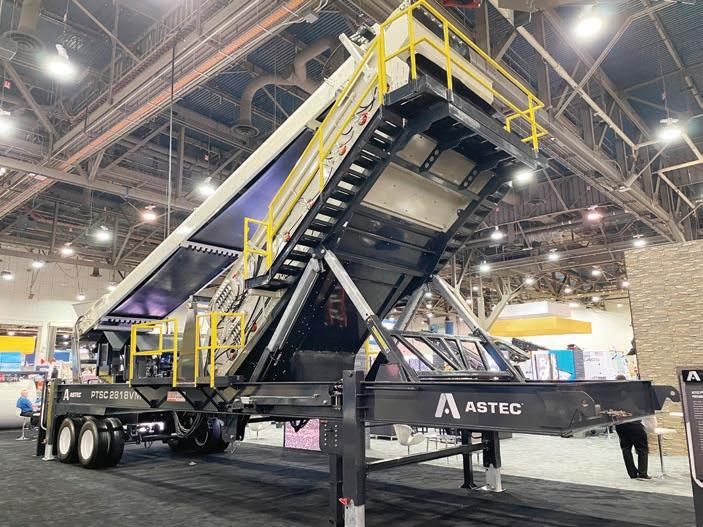 Martin Dummigan, Astec group vice
Martin Dummigan, Astec group vice
president of operations, said the expansion would almost double the facility’s size, highlighting the demand for Astec’s highquality products.
“More than half of the world’s mobile crushing and screening equipment originates in Northern Ireland, and establishing a larger footprint here will not only help us grow the business but also better serve our customers and partners,” he said.

The expansion is expected to be complete by mid-2023. Gordon said this will help
increase its distribution and supply of tracked equipment globally.
“Like all OEMs, component supply remains a challenge for us, and this supply chain all across the industry is still facing serious disruptions for the foreseeable future,” he said.
“That’s why we stay in close touch with our customers. We work hard to understand their businesses and their future requirements, often placing orders many months, and sometimes years, in advance to ensure we minimise any potential shortfalls.
“Our customers depend on us, and our job is to try and make sure they have what they need, when they need it. More than that, it’s also to ensure the equipment we produce is safe, productive and reliable.
“The right machine for every application, every time. That’s what Astec customers rely on. It’s what we’ve been doing for more than fifty years. And it’s what we’ll continue to do.” •
InSitu Real Estate is an affiliated company of Providing end-to-end real estate solutions for the specialised property sector InSitu Real Estate is a boutique agency providing real estate services to the extractive industry, mining, concrete & asphalt, waste & resource management, industrial and infrastructure markets. For enquiries contact Todd Clark Director Licensee in Charge +61 (0) 424 165 077 todd@insiturealestate.com Suite 303, 17 Wurrook Circuit Caringbah, NSW 2229 www.insiturealestate.com linkedin.com/company/insitu-real-estate
Visit astecaustralia.com.au to learn more.
The PTSC2818Vm features a delivery conveyor with hydraulic drive and full-length skirtboards.
BEING GREEN? TOO EASY
On April 13, hundreds of remanufacturers around the world celebrate the Remanufacturing Industrial Council’s Global Reman Day. Equipment manufacturer John Deere was one of them.
Remanufacturing involves the complete disassembly, cleaning, inspection, repair or replacement and reassembly of used components to restore them to a condition that meets or exceeds the original performance specifications.
John Deere remanufactures around 2300 part numbers including engines, transmissions, axles, and electronics. Nearly 12.5 million kg of material was recycled through John Deere Reman in 2022.

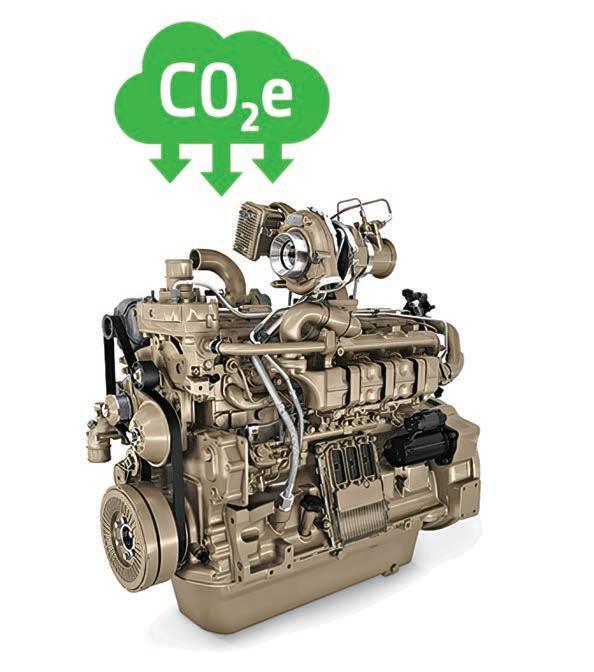
The company aims to remanufacture parts at equal or better standard than the original,
helping to reduce waste and conserve natural resources.
Emma Ford, John Deere Australia and New Zealand director of aftermarket and customer support said remanufacturing was an integral contributor to the company’s mission to connect with businesses and customers across the world to sustainably support communities as the global population grows.
“By 2030 we know there will be nine billion people on earth who will need to be fed, clothed and housed, and we feel we have a really critical role to play in that,” Ford said.
“We are very focused on working to support customers in doing ‘more with less’ by providing solutions like remanufactured parts that both reduce impact on the environment and input expenses – both of
better standard than the original.
which are important markers of a sustainable industry that can rise to meet the needs of the future.
“For example, not having to make a new engine or axle from scratch means natural resources are preserved, melting furnaces aren’t fired up, and carbon footprints are smaller.
“Having affordable remanufactured parts at the ready also provides dealers with more flexible options to help customers avoid downtime and improve their bottom line.”
John Deere’s remanufacturing is on track to grow 50 per cent by 2030 in line with the company’s sustainability strategy, outlined in the 2022 Sustainability Report. •
Visit deere.com.au to learn more.


38 Quarry June 2023 SUSTAINABILITY
service Australia wide
Industry leading solutions
Delta Rent operates one of the largest earthmoving equipment rental fleets of more than 450 high performance machines in Australia.
We understand that production is key for quarry owners and operators. In particular, the importance of high optimisation rates for the heavy plant and machines required to process raw materials and meet demand.

Our late model, low hour and meticulously maintained fleet – combined with expert 24/7 advice and analysis from an experienced and professional sales team – ensures our clients maximise production output without compromising quality, safety or environmental performance standards.
deltarent.com.au 1300 793 071
24/7 service Australia wide
Expert advice and analysis
Purpose built fleets tailored to quarry site requirements

OEM backed support, service and technicians
Late model, low hour fleet GPS systems hardwired

SHAPING TOMORROW
POWERING THROUGH
Lincom, through its OEM Powerscreen, has introduced one of the largest mobile jaw crushers currently on the market. Quarry spoke with the first Australian company to use it.
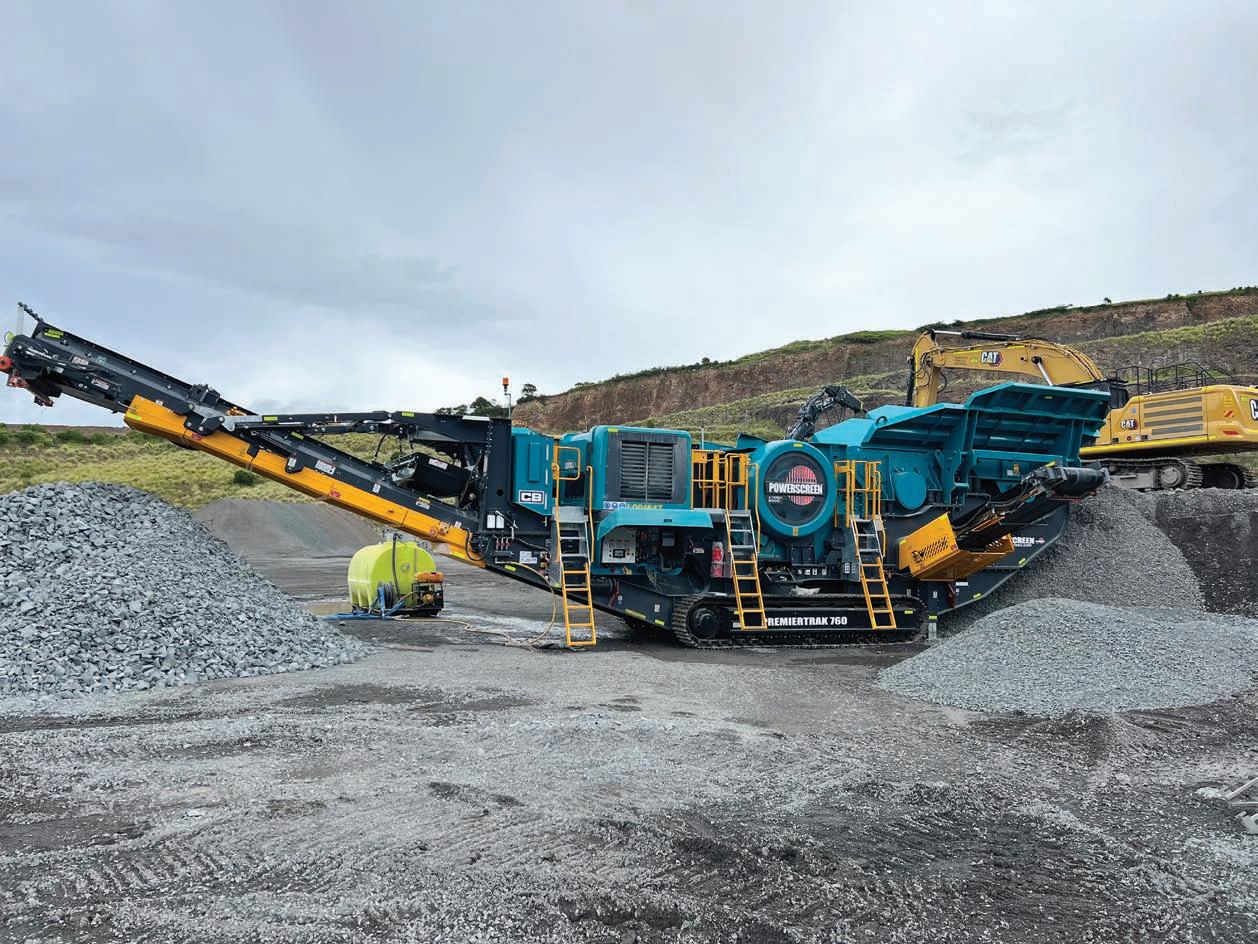
Cleary Bros has been a significant presence in the NSW construction services sector for decades. Now it will be the first Australian company to use Powerscreen’s Premiertrak 760.
The model was designed with the demands of contractors in mind, as well as quarry and mining operators who aspired to have a fuelefficient and low-engine-load mobile crusher.
On its exterior, it has an “RW” badge in honour of Lincom Group founder Roy Watterson, who was integral to bringing this machine to life.
The Premiertrak 760 incorporates the Terex Jaques JW55 single toggle jaw powered via a direct drive system, which makes it more fuel efficient and requires less engine load to operate.
It can be applied to aggregate materials such as sand, gravel, blasted rock, and river rock, and assists in recycling construction and demolition waste, as well as overburden foundry waste.

Cleary Bros’ General Manager for quarries
Todd Kalajzich said Cleary Bros wanted to scalp in pit for several reasons, its older fixed plant was not equipped to do this well.
“We needed to maximise our resource and consent hours to haul and crush,” he said. “We are now processing material that
may have been overlooked in the past. We also have some limitations for the storage of scalps around our fixed plant prior to blending.”
“Our smaller fixed jaw was struggling to meet our demands efficiently, which has been highlighted now that we are running a more suitable product from our surge to our high-speed cone crusher. We can now set our feeders at a higher rate with a reduced closed side setting allowing us to choke feed without the plant operator having to constantly adjust rates.
“We are planning to run a few days a week to crush and supply feed to the fixed plant, then use the Premiertrak 760 and our Warrior screen to make other products in pit, such as Gabions and rockfill type materials.”
The Premiertrak 760 offers a throughput capacity of up to 750 tonnes per hour depending on its application and material. It also has a direct drive chamber which is powered via a hydraulic coupling.
Its large 10m³ hopper has hydraulically folding sides and a wedge clamp system ensuring faster set up times and it has a vibrating pan feeder which is linked to an aggressive independent pre-screen, which provides essential removal of fines material before it reaches the chamber.
Kalajzich said its Premiertrak 760 will be primarily located at its Albion Park hard rock quarry site. The site’s outputs deliver raw material for the company’s concrete batching plants in Albion Park, Bombaderry, and Coniston.
Kalajzich chose the jaw crusher due to its large jaw size and increased production benefits.
“(Lincom Group) offered a machine there was basically direct drive and hydraulics was what we were looking for,” Kalajzich said.
“We didn’t want to rely on solely electric power to run the machine, as electrical infrastructure is not always guaranteed on site and in ten years’ time, with these machines operating in environments that traditionally have a lot of dust, we felt more comfortable with the direct diesel drive.

“The decision to get the Premier Trak 760 from Lincom, came from the fact that they are local and have worked with us closely in the past and have treated us quite well. We have a fair amount of Powerscreen machinery we have purchased from Lincom Group in the past.”
Its product conveyor has a discharge height of 4.5 metres and a stockpile volume of 136m³. It features a hydraulic raise and head section for service access and maintenance
40 Quarry June 2023 CRUSHERS
The Premiertrak 760 can be applied to aggregate materials such as sand, gravel, blasted rock, and river rock.



PROACTIVE TODAY PRODUCTIVE TOMORROW visit us at kinder.com.au
MOBILE CRUSHER BOOSTS CIRCULAR ECONOMY



An Adelaide-based demolition and concrete recycling company has enhanced its capabilities with a Metso Outotec i908S mobile impact crusher from Tutt Bryant Equipment.
No type of structure is too big for DeJay Contracting, whether it’s a local home or a high-rise office building in the inner city.
The South Australian company believes in providing responsible demolition services. Recycling waste building material is an integral aspect of this work, which is it is dedicated to reducing its environmental impact, however possible.
More than 85 per cent of the waste materials are recycled and stocked in its yard for sale to the public, using its extensive range of specialist plant and equipment.
To enhance its concrete recycling capabilities, the company purchased a Metso Outotec i908S mobile impact crusher from Tutt Bryant Equipment.
Djordje Stijakovic, owner of Dejay Contracting said the compact size, versatility and advanced dust suppression makes it a perfect fit for the company’s urban recycling application.
“We’re confident that the i908S will enable us to deliver even better results for our clients while supporting sustainable construction practices,” Stijakovic said.
The new crusher is set to allow DeJay Contracting to produce high-quality recycled aggregates more efficiently than ever before.
The Metso Outotec i908S is a highly compact and versatile mobile impact crusher with a removable hanging screen, designed to meet the needs of small to mediumsized operations.
It features a direct drive horizontal impact crusher with variable speed control, allowing operators to fine-tune the product to their exact specifications.
Additionally, the i908S comes equipped with an advanced dust suppression system, which minimises dust emissions and helps keep the work environment safe and clean.
DeJay Contracting’s purchase of the i908S highlights its commitment to sustainability and environmentally responsible practices. By recycling concrete waste and producing high-quality recycled aggregates, the company is helping to reduce the need for new raw materials and supporting the circular economy.
materials come from its various house and commercial demolition projects.
support from the Tutt Bryant Equipment branch in Adelaide.
“Their professionalism and expertise have made the purchasing process a smooth and positive experience for us,” he said.
Mark Reeves, the Tutt Bryant Equipment area manager, expressed his enthusiasm for the purchase.
“We’re thrilled to see the i908S being put to use in such a critical application,” Reeves said.
“Its advanced features and high productivity make it a valuable asset for any concrete recycling company looking to increase efficiency and reduce environmental impact.”
“At Tutt Bryant Equipment, we are proud to offer our clients the Metso Outotec i908S and other top-quality crushing and screening
42 Quarry June 2023 CRUSHING AND SCREENING
Metso Outotec i908S mobile impact crusher is designed for high-quality recycled aggregates.
BUY. SELL. HIRE. QUARRY MARKETPLACE
AUSTRALIA’S FIRST EVER ONLINE PORTAL DEDICATED TO BUYING, SELLING AND HIRING QUARRY EQUIPMENT.
For

MARKETPLACE
Be it a
a
it
Marketplace
This is your one-stop-shop for buying, selling, and hiring a variety of machinery, including excavators, loaders, dozers, rollers, graders, crushers, earthmovers and more, from both dealers and private sellers.
mini excavator or
complete
sand washing plant, you can advertise
on the Quarry
to reach the right buyer.
the QR code to find out more.
advertising opportunities, contact ben.coleman@primecreative.com.au or call 0401 426 831 Scan
NO RAINING ON NEWCASTLE SAND’S PARADE
McLanahan has provided vital equipment for a major sand supplier — the equipment it needed to meet the demand for washed sand.
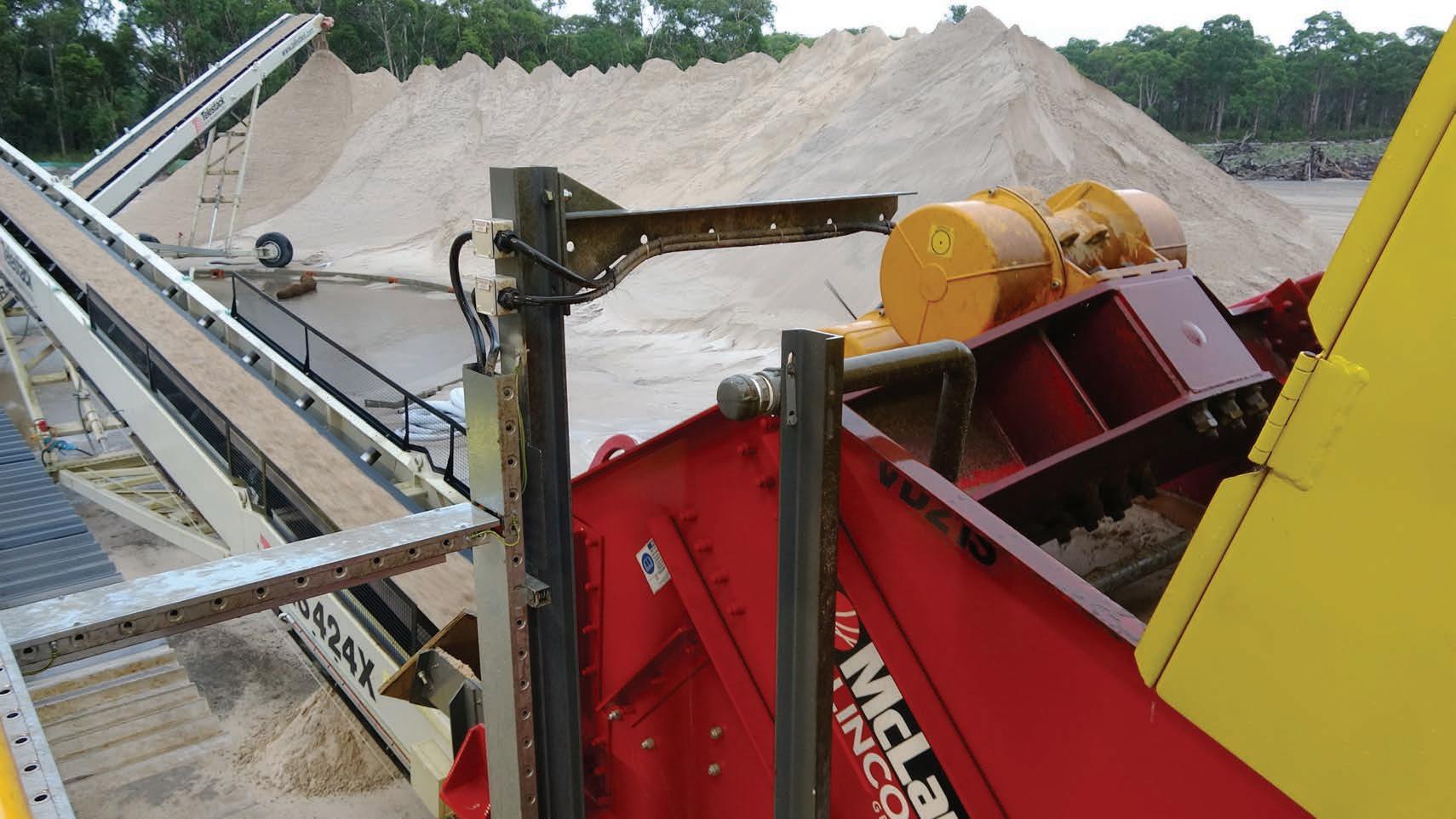
Newcastle Sand supplies some of the largest concrete producers in the Hunter Valley with constructiongrade sands. However, in 2019 when it commenced its operations, it faced a challenge.
The company had opted to dry wash its sand products with an air separator, which meant rainy days would put a damper on the dry process.
To solve this, Newcastle Sand purchased a small-scale wash plant consisting of a small screw washer and later supplemented the screw washer with a higher-volume plant to meet increased demand.
But even with the two wash plants, the smaller one and the higher-volume plant, Newcastle Sand was still struggling to meet the demand for washed sand.
“We sought to find a screw washer that could increase our production to keep up with the current market demand,” quarry manager Eliott Laver said.
Laver had a previously worked with Lincom, McLanahan’s dealer for aggregate wet processing equipment in Australia, prior to joining the Newcastle Sand team. Working with Lincom and McLanahan, Newcastle Sand installed a McLanahan fine
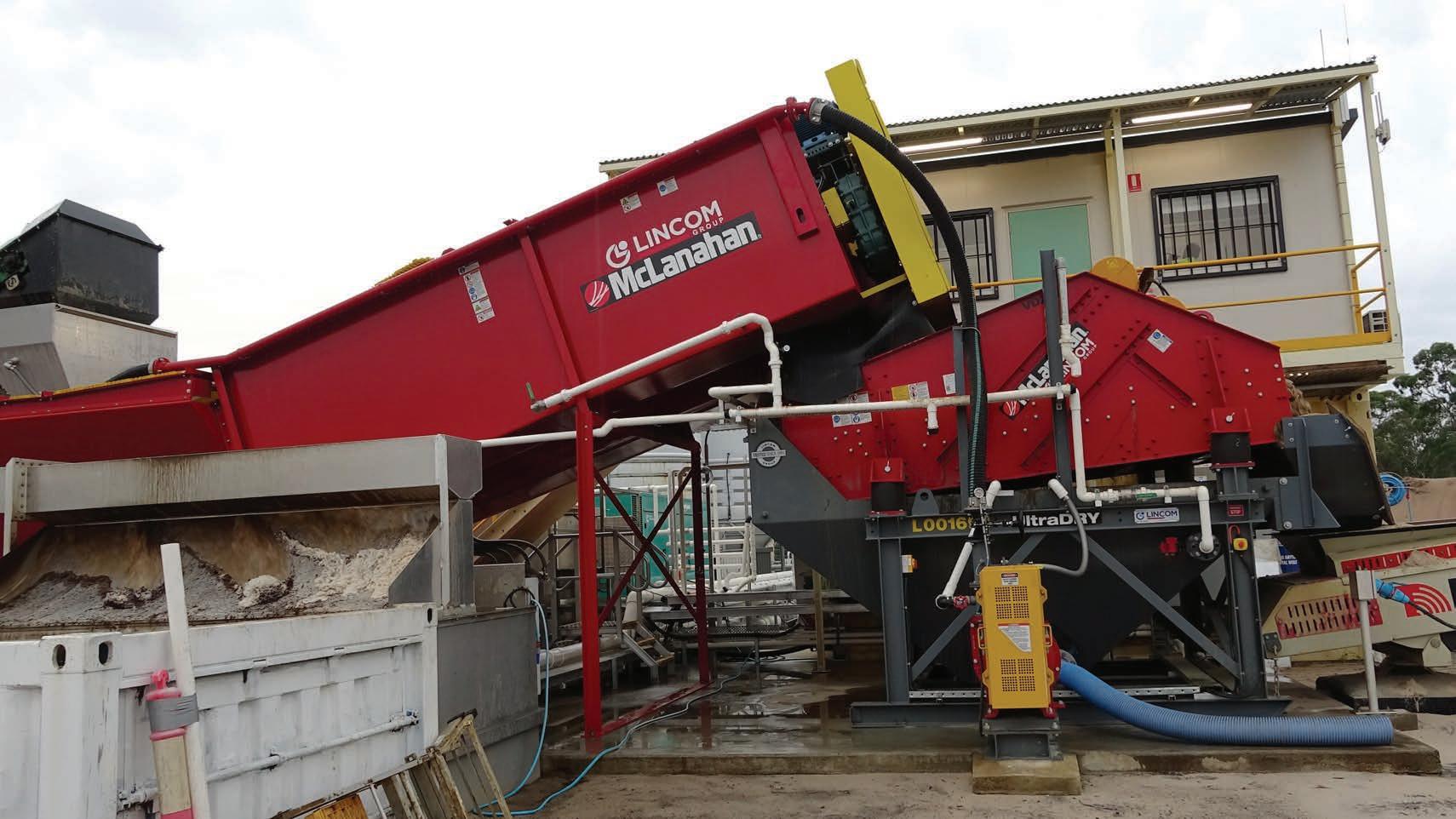
material double screw washer and UltraDRY modular dewatering screen.
“We assessed all the options in the market, and we chose McLanahan based on the ability for McLanahan to work with us to give us the confidence that this product, this machine, is going to do the output required,” Murray Towndrow, one of the owners of Newcastle Sand, said.
The McLanahan fine material screw washer washes, classifies and dewaters Newcastle Sand’s washed sand product, while the UltraDRY dewatering screen removes excess moisture from the final product.
An integrated sump underneath the UltraDRY dewatering screen captures the water that is removed from the sand product and recirculates it back to the screw washer via a pump to aid in the washing process.
Towndrow said the sales process was very collaborative, with all parties providing information and feedback to ensure the right wash plant was chosen to handle Newcastle Sand’s product demands.
“They worked with us to solve a problem,” he said. “They really just gave us confidence that this size plant was going to do what we needed it to do.”
Towndrow said he was “exceptionally
happy” with McLanahan throughout the sales and commissioning process.
“They’ve worked with us, not against us, and that’s probably the biggest strength that we’ve had,” said Towndrow. “They just haven’t given us a plant and said, ‘Here you go, good luck,’ they’ve been with us to make sure that this thing works.”
Since installing the McLanahan wash plant, Newcastle Sand has more than doubled its production.
With the UltraDRY dewatering screen reducing the moisture content of the final product, Laver said Newcastle Sand can sell the product straight from the belt, minimising stockpile requirements.
“Being able to sell our material straight off the belt rather than stockpiling and letting our material dry allows us to reduce the amount of haul times, reduce our product movement or handling,” Laver said.
In addition to being able to sell the product more quickly, Newcastle Sand has experienced additional benefits from the UltraDry dewatering screen, such as improved site housekeeping and recirculation of water back to the wash plant.
“The McLanahan UltraDRY dewatering screen allows us to keep our stockpiles clean
44 Quarry June 2023 SAND WASHING
Newcastle Sand installed a McLanahan fine material double screw washer and UltraDRY modular dewatering screen.
and tidy,” Laver said. “We have less water runoff, and we’re able to harvest that water and reuse it in the wash plant.
“We’re able to recover up to 90 per cent of the water from our washing process. In turn, we recycle that water, reducing our environmental footprint in the location.”
Towndrow said the McLanahan wash plant is an integral part of their business. It gives Newcastle Sand the confidence to seek out new customers in the market.
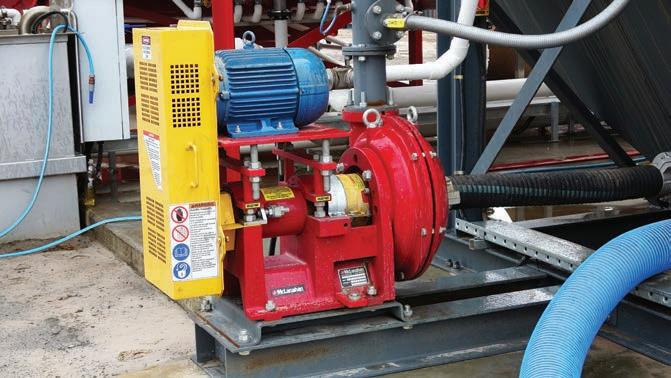
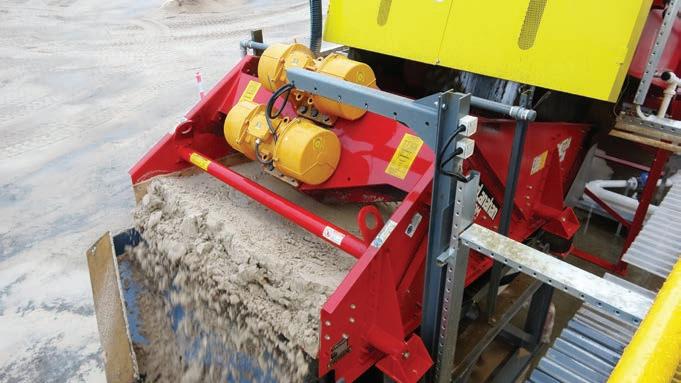


“When we assessed all of the other options, I’m fairly confident in saying that we would not have gotten the support from any other brand like we have with McLanahan,” he said.
“They’ve been right there beside us the whole way through this, and that’s ensured that we’ve got a great outcome and a great plant that we’re going to use for the rest of our resource.
“I can confidently say that in choosing
McLanahan, we’ve had the best prepurchase advice and recommendations that followed through during the delivery and construction process of the plant. What you see today is a genuine collaboration between Newcastle Sand and McLanahan to get a plant that’s the right size, that works for us, and is going to be reliable and give us consistent material.” •
Visit
Quarry June 2023 45
for more
mclanahan.com
information.
Newcastle Sand has more than doubled its production.
The McLanahan wash plant is an integral part of the business.
Newcastle Sand can sell the product straight from the belt, minimising stockpile requirements.
SIX THINGS YOU SHOULD KNOW ABOUT SAND PROCESSING
With environmental regulations tightening, sustainable practices in sand processing have never been more important. Superior Industries’ mineral wet process guru, John Bennington, outlines the six biggest things to know.

Australia is no stranger to drought, which makes water-wise industrial practices an important consideration. While there is no quick fix or one size fits all solution, there are key steps that lead to reduced water use, maximum water recovery, and overall water-efficient operation.
1. REALISE PROPER MAINTENANCE IS STEP ONE
If processing equipment is not maintained properly, machinery could be putting material in the settling pond that belongs in the stockpile. This means losing money on the saleable product side, spending even more money on pond management, and wasting valuable water resources day after day. Always practice proactive (versus reactive) maintenance strategies. Get in the habit of conducting regular plant walkthroughs. The strategy should be to catch smaller issues before they become larger costly concerns. Employ recommended lubrication practices. Maintain proper screen belt tensioning and inspect screen media weekly for opening wear or holes. Importantly, monitor raw feed gradation to determine if any changes have happened.
Reducing water usage begins with ensuring washing equipment is in good
operating condition. For example, make sure that cyclones do not have excessive wear. Fine tune any sand screws. If they’re running too fast, there may be excess water going to the stockpile. Ensure that flushing water has proper pressure and direction and add dewatering screens where appropriate. Also, verify that screen spray bars are pointed correctly, and turn off any unneeded spray bars.
Material processing is an end-to-end solution via a complete system. It makes little sense to put the latest, greatest component in the material flow chain if, for example, the screen ahead of the circuit isn’t functioning as specified.
Access the right support teams. It’s important to work with an equipment and service provider who examines an operation as a whole and customises solutions to meet the quarry’s specific needs and product specifications.

2. MAKE SETTLING PONDS AN OPERATIONAL PLUS
Some sites are ideally suited to the use of settling ponds and others are not. A common complaint is the issue of filling too quickly and requiring frequent, timeintensive bailing.
Again, make sure that the only material going to the pond is material that’s supposed to go to the pond. That’s the first thing. The next is ensuring that the pond is big enough for the water volumes required.
In truth, operations often ignore the math. They don’t calculate the amount of silt that accumulates every single hour, and what space that ultimately requires. Ponds must be sized to handle the capacity for silt between cleanings.
If the operation is using flocculants to chemically treat the pond, that can help – if they are used correctly. Facilities may also add a fines recovery system and a water clarifier to the mix. In that case, flocculants are limited to just the quantities needed to treat the solids.
Lastly, if employing chemical treatments –regardless of what other mechanical systems are in use — the site must have a water storage capacity that equals about a day’s runtime of the plant. Why? Because even with the best of systems, it’s difficult to be exact on the optimal amount of chemicals to use in any given case. Too little and the system doesn’t work at all — while too much can result in unused, unwanted chemicals getting back into screws, classifying tanks and the entire plant.
46 Quarry June 2023 SUSTAINABILITY
A fines recovery system.
3. UNDERSTAND WATER EFFICIENCY IS NOT A QUICK FIX
To minimise pond use and maintenance, operations may turn to mechanical solutions such as filter presses, cyclones, water clarifiers, fines recovery systems, and more. While each has its advantages and disadvantages in an application, there is rarely just one quick fix, or just one piece of equipment recommended for any given situation. It’s usually a good idea to have more than one stage in an effective mechanical solution.

For example, it’s common to see producers placing a cyclone fines recovery plant in the middle of the waste stream before it’s discharged to the pond. Producers may view this as an easy, simple solution. However, consider that most cyclones generally keep only about half of the minus-200mesh material from going to the pond. Consequently, much of the material that goes to the pond is ultra-fine. These particles
are not easily bailed, as they simply flow around the excavator bucket. Someone once described this situation as “bailing smoke” This supports the fact that quick fixes such as these can make the problem worse.
4. INCORPORATE LOW WATER WASHING TECHNOLOGY

More and more operations are faced with severely limited water resources to pull from wells or from the environment.
When it comes to conventional methods, a sand screw needs around 190 litres per




minute of water for every tonne of minus200-mesh in the feed. Even if an operation is only running at 100-tonnes per hour, and their minus-200-mesh is at 15 per cent – that is 15-tonnes of fines requiring almost 3000 litres per minute of water to adequately lift the silt over the weirs of the screw. That’s a lot of water for most crushing operations.

Superior Industries has engineered its Alliance Low Water Washer to cut water usage by up to 80 per cent. The technology combines a specially designed agitator and a dewatering screen within one machine. It
 The Aggredry Washer is designed to overcome the big disadvantages of wet processing.
Excessive water usage can cost significantly.
The Aggredry Washer is designed to overcome the big disadvantages of wet processing.
Excessive water usage can cost significantly.
allows the operation to wash crusher dust right next to the crushing circuit, eliminating the cost of handling and hauling the fines to a separate washing circuit. The system accepts a dry feed directly from the crushing circuit and processes that material into a highervalue manufactured sand.


The agitator section in the low water washer is positioned at the front end of the screen where water is added to the dry feed and mixed, producing a thick slurry which is fed to a robust dewatering screen. A series of spray bars push the material down through the screen.
A sand screw requires considerable water usage to lift the silt over the weirs. Alternatively, the low water washer uses
product that is much lower in moisture content. Consequently, the big advantages are low water use, large throughput, efficient fines management and lower costs per tonne.
5. USE DEWATERING WASHERS FOR FINES RECOVERY
For many operations, maximum water recovery is job one. They must achieve as much of a closed loop as possible within the wash plant. Consider that a standard sand screw will put of water back into the stockpile – a net loss. It’s not discharging into a pond or recycling back into the system. It’s either going into a truck or evaporating on the ground.
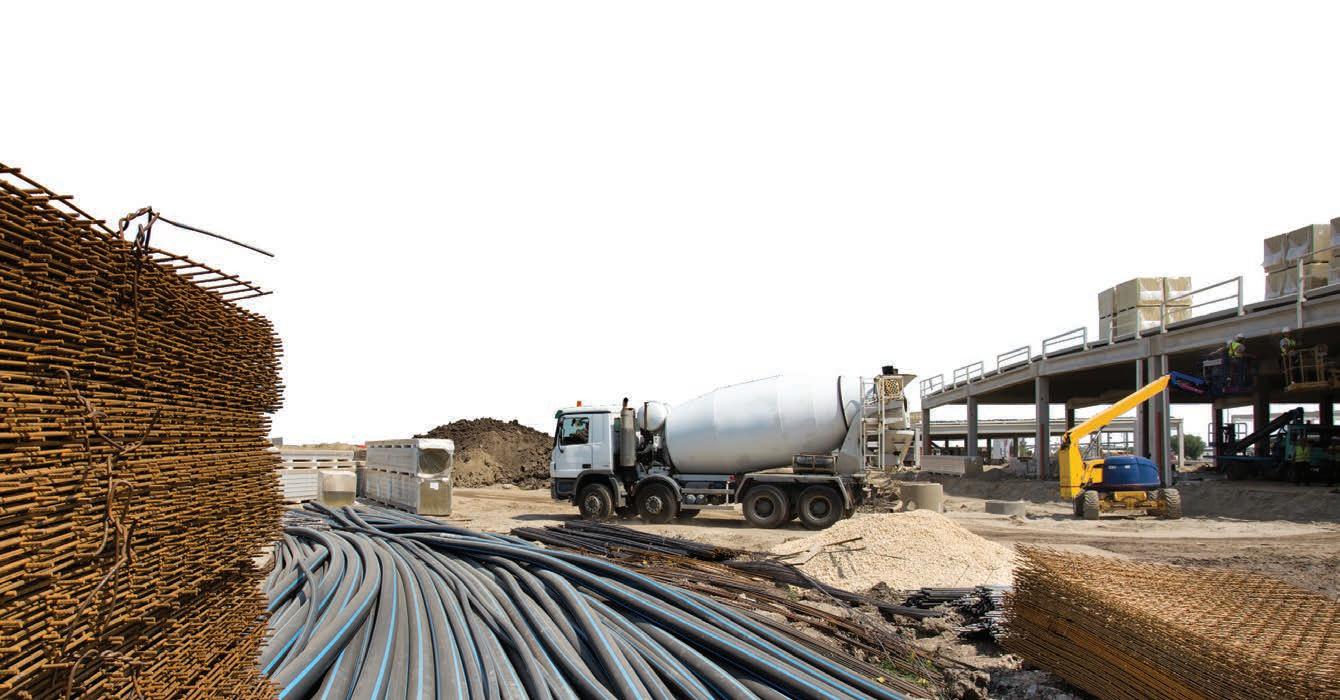
by capturing, recirculating, and reusing water within the system. Operations can cut water usage by 50 per cent or more, when compared to conventional methods.
Within the Aggredry Washer, the clays, dirt and fines are separated before the sand moves to an attached dewatering screen. Lost fines are collected in an underflume and are flushed back to the screw. The resulting sand is discharged from the washer with a moisture content as low as 8 per cent, making it immediately saleable. While cyclones are commonly used in sand washing applications, the slurry pumps in cyclone plants significantly increase horsepower requirements and inflate energy costs. Using as little as one-third the horsepower per metric ton as that of the typical cyclone, the Aggredry dewatering washer delivers energy cost savings, while producing a finished product that requires no drying time.
The Aggredry Washer is designed to overcome the big disadvantages of wet processing — water and material waste, stockpiling space for drying time, and costly pond maintenance.
6. PROFITABILITY REQUIRES MORE WATER RECOVERY
In truth, efficient water use rarely gets the attention it deserves. Because water use is such a big part of sand processing, it needs just as much attention as finished products require. By being wise in the use of valuable water resources, operations remain profitable while achieving much-sought-after sustainability goals. •
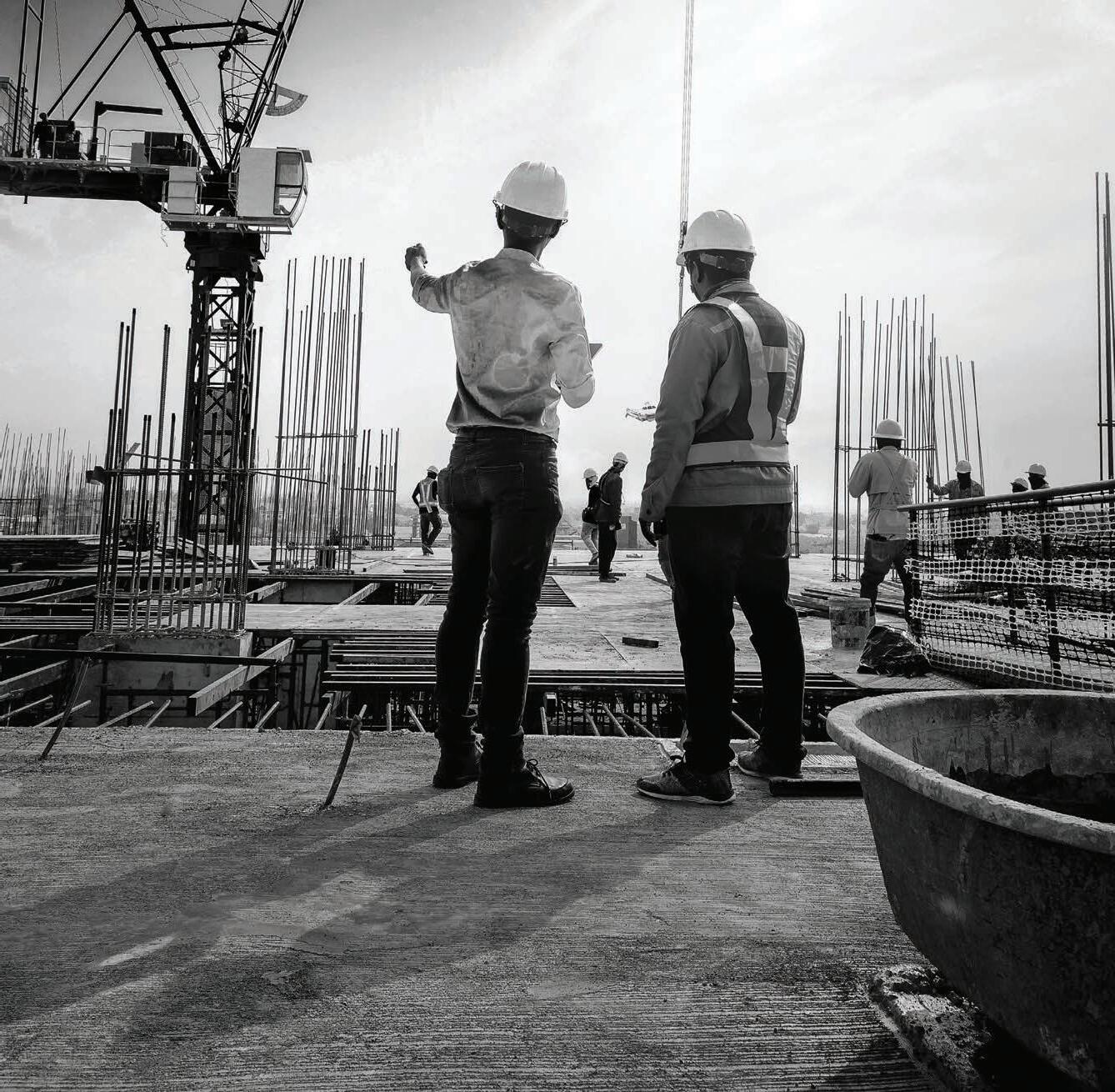
Visit superior-ind.com to learn more. SUSTAINABILITY
Superior Industries has engineered its Alliance Low Water Washer to cut water usage.
Some sites are ideally suited to the use of settling ponds and others are not.










CONFERENCE SPONSOR ASSOCIATION PARTNERS SUPPORTING SPONSOR EXHIBITION SPACE NOW ON SALE Melbourne’s leading construction and major infrastructure event insideconstructionexpo.com.au Get your share of major infrastructure projects Melbourne Convention and Exhibition Centre 20-21 Sept 2023
JUST HOW SAFE IS THE SAFEGUARD MECHANISM?
The Federal Government’s safeguard mechanism is poised to slash Australia’s carbon emissions. But there is an emerging fear that without adequate protections in place, manufacturing – and carbon emissions – will simply be pushed overseas.
The Federal Government first introduced the Safeguard Mechanism in 2016 to put a cap on emissions growth from largescale industrial activities.
The mechanism applied to activities that produce annual carbon emissions in excess of 100,000 tonnes. The idea was to introduce baseline emissions for individual facilities, which companies couldn’t exceed, or would have to buy carbon credits to offset excess.
But the effectiveness of the mechanism was questionable. Baselines were never lowered, and emissions continued to rise. Now, three years later, the Government is giving it another crack.
In March of this year, Parliament passed the Safeguard Mechanism (Crediting) Amendment Bill 2023, which tightened the belt on emissions in line with the nation’s target to reduce emissions by 43 per cent by 2030 – and the greater goal of net zero by 2050.

The new law will come into effect from July and will enforce baselines on facilities with
scope one emissions in excess of 100,000 tonnes per year.

That covers 215 of the country’s top polluters from the mining, quarrying, oil and gas, and a handful of other industries, which account for almost 30 per cent of Australia’s total emissions.
These strict baselines are set to be incrementally lowered each year, with the short-term goal of reducing annual emissions from 140 million tonnes to 100 million tonnes by 2030.

On average, emissions-intensive companies will have to reduce emissions by almost five per cent per year.
But what happens if a company exceeds its emissions baseline?
Key to the regulations are changes to the availability and use of carbon offsets. An Australian carbon credit unit (ACCU) is a unit issued to a person or company by the Clean Energy Regulator. Each ACCU represents one tonne of carbon dioxide stored or avoided by
a project. For every project that goes under emissions target, a company will receive an equivalent in ACCU’s.
These ACCU’s have tangible value. They also have a particular function when it comes to the safeguard mechanism. When a company exceeds its baseline, ACCU’s can be surrendered to offset emissions. If a company has no ACCU’s to spare, they can be purchased from other companies.
Companies who exceed their emissions budget and are forced to buy ACCU’s will do so at significant financial cost. While those who cut emissions and earn ACCU’s stand to gain.
And to deter companies buying up ACCU’s to justify massive blowouts in their baselines, the new regulation requires facility operators to publicly justify their use of offsets to the Clean Energy Regulator if they use more than 30 per cent or more offsets to meet the baseline.
The interaction between the safeguard
50 Quarry June 2023 SUSTAINABILITY
The safeguard mechanism will come
mechanism and ACCU’s is the Government’s way of providing flexibility and incentivising companies to adopt carbon-reducing activities at an operational level, rather than relying on offsetting.

As for what the law will mean for new projects, the situation remains unclear.
The new law includes a ‘pollution trigger’, which requires the Minister for Environment
and Water to give an estimate of the scope one emissions of an approved expansion or construction of a project that falls within the safeguard mechanism. The Minister for Climate Change will then be required to undertake public consultation to determine whether the safeguard mechanism rules will require amendment as a consequence.
In other words, major projects will all
have to squeeze into the same total annual emissions budget of 100 million tonnes by 2030. If a new project seems likely to blow that budget, the Government may amend the safeguard rules to preserve the cap by limiting or reducing the value of ACCU’s, adjusting the decline rates of baselines, or imposing conditions on new projects.
In effect, the Government will have to weigh

Maximum stockpile capacity of 100,000 tonnes INCREASE MATERIAL HANDLING EFFICIENCY Multiple tonnage options of 400tph, 600tph and 800tph 270° of radial movement MAX 100,000 TM www.terexjaques.com jaques@terex.com
The quarry industry may be among the most affected by the new legislation.
approving new projects against tightening baselines for companies covered by the safeguard mechanism.
While it might limit Australia’s emissions, there is one issue – it incentivises taking industrial activity to other countries, effectively pushing emissions offshore.
Boral and Adbri, two major players in the cement industry, will both be affected by the safeguard mechanism and have expressed similar concerns. The companies say they want to see protections put in place for the sake of jobs and local manufacturers.
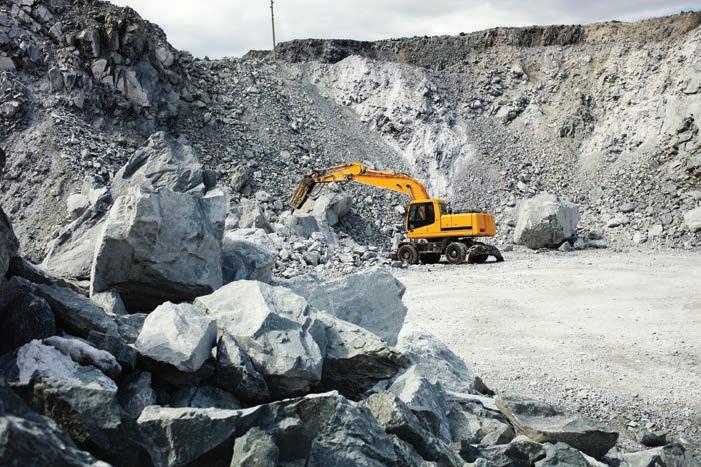
The worry is that companies will simply import carbon-intensive products from overseas.
Boral and Adbri have accordingly urged the Government to consider a carbon border adjustment mechanism, which is a tax on emissions-intensive goods imported from countries with lax environmental standards. Such a mechanism would balance the cost of overseas goods with those made onshore at a higher cost, ensuring onshore manufacturers can remain competitive in the wake of the safeguard mechanism.
Vik Bansal, chief executive officer of Boral, said in a statement that a carbon border adjustment would help ensure that local manufacturers could compete with rivals from other countries, who typically do not have an equivalent measure to the Australian safeguard.
“We need to ensure local manufacturers remain competitive and there’s no carbon leakage or bleed that occurs with importation of materials from countries with lower environmental standards.”
“While we appreciate the passage of the safeguard mechanism, we’re also urging the government to move with pace on its review into a carbon border adjustment mechanism,” Bansal said.

“This will ensure a level playing field for domestic manufacturers who are committed to decarbonisation.”
Speed was important in bringing in a level playing field so that local cement
manufacturers are not disadvantaged, Adbri chief executive Mark Irwin said.
Adbri has four cement plants in Australia and the group’s Birkenhead plant in Adelaide, which employs 300 people and has been in operation since 1914, is considered most at risk with this recent announcement.
“A carbon border adjustment mechanism would preserve manufacturing jobs in Australia and also minimise the risk of carbon leakage,” Irwin said.
“We hope that the government and the opposition can work together to implement a carbon border adjustment mechanism as soon as possible for sectors such as ours.” •
52 Quarry June 2023
The safeguard mechanism has been ratified into the National Greenhouse and Energy Reporting Act 2007 (Cth).
A carbon border adjustment mechanism would preserve manufacturing jobs in Australia and also minimise the risk of carbon leakage
” SUSTAINABILITY
Mark Irwin, Adbri chief executive
“
Carbon emissions are unavoidable in the creation of concrete.


IQA NEWS
OUT AND ABOUT WITH THE IQA BRANCHES
NSW YOUNG MEMBERS NETWORK –MARULAN SOUTH QUARRIES
Early April saw the NSW branch Young Members Network (YMN) host an outstanding day for members and guests at the Boral Peppertree quarry and limestone mine in South Marulan.


Two bus convoys enjoyed tours of both sites, where Boral quarry managers and supervisors generously gave their time to engage with future leaders and new entrants to the extractives industry. Attendees had the opportunity to see the Lokotrack LT160 mobile crusher in action, visit the Marulan South limestone mine pit lookout and view an overburden production blast at Peppertree.
There were a lot of people to thank after such a great event.
A big thanks to Zacc Broderick of Sandvik for hosting a great barbecue lunch for all. And thank you to the YMN team, NSW state coordinator Shane Andersen and NSW Illawarra sub-branch YMN representative Jordan Bertucci, for their commitment to the network and their behind-thescenes planning.
Thanks must also go to co-host Boral, as well as a special shout out to our bus drivers ‘Shine and Peter of Komatsu’.
Finally, a big thank you to the event sponsors SITECH Solutions and Sandvik Rock Processing for supporting a great initiative.
The next YMN event will be hosted by the Hunter sub-branch in July, so watch this space.
QUEENSLAND BRANCH TECHNICAL LUNCH AND LEARN
There were no spare seats at the Queensland branch technical lunch and learn event held on April 20. Senior site executives, quarry managers, supervisors and quarry personnel came together for the final information session on the Practising Certificate Scheme (PCS).
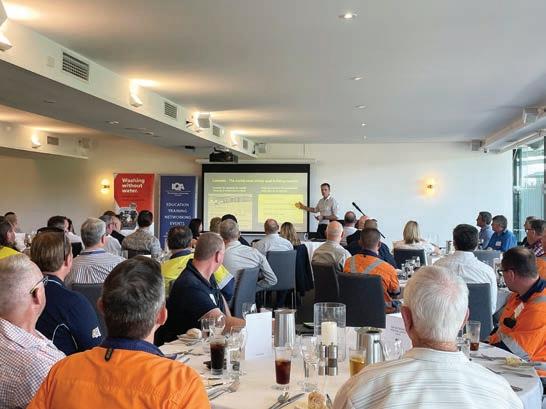
Resources Safety and Health
Queensland’s chief inspector of mines, Hermann Fasching, presented information on the scheme, while also providing attendees with an update from the department.
Fasching discussed the respiratory health surveillance legislation and stressed the importance of compliance. His presentation concluded with information on the department’s new sexual assault and harassment reporting line, a new initiative that was prompted by the department following the Western Australia inquiry. Event sponsor Kayasand spoke about its innovative technology for producing the perfect concrete sand, and this presentation was complemented by an update on the Department of Transports’ latest update
on TMR Technical Specifications MRTS70 –concrete by Wayne Roberts.
A highlight of the afternoon was the presentation of Honorary Fellow of the IQA to David Hogan.
The Queensland branch would like to thank and acknowledge the event sponsor and its guest speakers.
YOUNG MEMBERS NETWORK SA SITE VISIT
On Friday 14 April, young members gathered for a tour of Hallett Concrete’s Mile End Wet Batch Concrete Plant, a state-
54 Quarry June 2023
Attendees saw the Lokotrack LT160 mobile crusher in action.
SA young members gathered at the Hallett Concrete’s Mile End Wet Batch Concrete Plant.
There were no spare seats at the lunch and learn.
This plant uses an automatically activated conveyor belt system from its receiving bins. This allows one operator in the control room to mix up to 12 m3 of concrete in one batch in just over 90 seconds, and up to 180 m3 per hour.
In an space affectionately known as the ‘renewable area’, Hallett Concrete uses a trommel to separate the sand and stone of returned or left over concrete. The company can even extract the water using a filter press to utilise around the plant to eliminate dust. Given they are working in close proximity to a chocolate factory, this is a vital step.
MEMBERSHIP
IQA membership is due for renewal. Being a member is the best way to stay connected to the institute and benefit from networking, education and innovation. Membership is about connecting you to the industry, offering networking opportunities and access to education and information. We look forward to supporting you and the industry in the next 12 months.

You will receive your renewal notice over the coming weeks. If you have any questions about your membership, please call (02) 9484 0577.
All materials harvested from the reclaimer system are also used as recycled product in concrete mixes.
The operation will soon become only the second concrete plant in Australia to mix CO2 into its batches to lower the amount of cementitious product needed
while still maintaining a high-strength product, creating a more environmentally friendly concrete.
It was a great tour that was enjoyed by all members. Thank you to Will Stockdale and Joel McKinnon for showing the group around.
UPCOMING COURSES AND EVENTS
COURSE UNDER THE SPOTLIGHT
QUARRY ROADS AND ONSITE VEHICLE SAFETY
Resources Safety and Health Queensland (RSHQ) advises that there have been 15 reported rollovers of trucks or trailers at metalliferous mines and quarries in the state in the last 12 months.
Some of the recurring factors include:
• driver distraction, fatigue and mobile device usage
• not driving to the conditions
• operator familiarity with the haulage environment
• adverse weather conditions
• mechanical defects, particularly with trailer braking systems.
While these statistics are specific to Queensland, it would be fair to say these
incidents occur too frequently and amount to a national issue.
As a peak industry body, the IQA develops education to support improvements to ensure the success of quarry and associated industries operations. Skilled workers are safer, more efficient and more productive, which can significantly impact the bottom line.
The IQA has developed the ‘Quarry roads and onsite vehicle safety course’ to provide an understanding of the safety, efficiency and productivity considerations for managing haul roads and transport in quarries.
The webinar looks at:
• the hazards and risks associated with the operation of vehicles, and mobile plant and equipment in quarries
• an overview of legislative requirements
• strategies for management of traffic and haul routes.
If you are a quarry manager, supervisor, health and safety officer, or someone responsible for traffic and transport management, this is the webinar for you.
CPD HOURS: 1.5
IQA QCMS: Risk management
NSW MOC: 1. Mining and WHS systems
(Subject B: Principal hazards)
This training can be offered as a webinar or as a corporate program and can be contextualised to your company’s policies and procedures and any specific incidence. The next ‘Quarry roads and onsite vehicle safety’ webinar will be held on Tuesday June 20. Contact the IQA for corporate programs.
Quarry June 2023 55
Event Date TimeLocation Learning from Disasters online workshop Wednesday June 7 8.00am –4.30pm (AEST) Online Contractor and supplier safety management online workshop Tuesday June 13 12.30pm –4.30pm (AEST) Online Chain of responsibility online workshop Wednesday June 14 9.00am –12.30pm (AEST) Online Introduction to safety and health management systems webinar Thursday June 15 1.00pm –2.00pm (AEST) Online SA branch site tour and social Friday June 16 3.00pm –4.00pm (ACST) Barossa Quarries Quarry roads and onsite vehicle safety webinar Tuesday June 20 11.30am –1.00pm (AEST) Online WA safety and health seminar 2023 Wednesday June 21 7.30am –10.00am (AWST) Perth Queensland plant and equipment half-day workshop Wednesday June 21 9.00am –1.30pm (AEST) Komatsu (Wacol) Emergency management webinar Wednesday June 21 12.00pm –1.00pm (AEST) Online


As the only national quarrying publication and the official journal of the Institute of Quarrying Australia, you’ll always be up to date with the latest developments in industry news, technology and events with Quarry Magazine. It’s quick and easy to subscribe to our monthly print issues, our annual Suppliers Directory and our weekly eNewsletter. Don’t miss out! SUBSCRIBE NOW www.quarrymagazine.com or email: subscriptions@primecreative.com.au
PLASTIC ROCKS: AN UNNATURAL NATURAL PHENOMENON
Plastic pollution may have led to a new form of rock.
Rocks that have had plastic fully incorporated into their structure have been found in China.
Discovered in Heichi City, experts have claimed that these odd formations were formed from the large collection of plastic pollution floating in the ocean.
This new form of plastic pollution is likely due to the film of plastic chemically bonding to rocks.
The discovery was made weeks after similar rocks were found on a remote Brazilian island.
The rocks were found on Trindade, a volcanic island off the coast of Brazil by geologist Fernanda Avelar Santos, with similar concerns that the formation of the rocks came from the glut of plastic around the island.
The discovery adds credence to a growing global recognition of scientists that plastics have become part of Earth’s geology.
A study detailing the discovery of these plastic rocks, ‘Plastic- Rock Complexes
as Hotspots for Microplastic Generation’ was published in Environmental Science and Technology.
The study details the discovery of a new type of plastic material in the environment, when plastic debris irreversibly sorbs onto the parent rock after historical flooding events.
The complexes which were examined consisted of low-density polyethylene (LDPE) or polypropylene (PP) films that had been stuck onto quartz-dominated mineral matrices.
Speaking on the research, Deyi Hou, a soil and groundwater scientist at Tsinghua University, said that the formation of plastic on these rocks was possibly driven by ultraviolet light from the sun.
“People in the twentieth and twentyfirst century are creating new geological records,” Hou said in a report released by Nature.
Hou said the plastic embedded in the rock in this study came from the garbage
accumulated in and around the creek, which included polypropylene films, used to make plastic bags, and polyethylene films, used by farmers to cover crops.
This new geological phenomenon could leak additional microplastics into the environment.

In order to test potential damages, the researchers detached parts of the films from the rocks and exposed them to wet and dry cycles to mimic the creek’s periodic floods over a longer period of time.
The findings presented found rates of microplastic generation greater than reported in lab tests mimicking plastic shedding in landfill, seawater, and marine sediment.
Further research is conducted on the formation and conditions taken to form these sedimentary objects, but early findings suggest that regions of higher pollution are the main drivers behind these curious rocks. •
58 Quarry June 2023
GEOLOGY
TALK
infrastructure in place:
• 2 x Weighbridges • Workshop • Offices & Associated Equipment
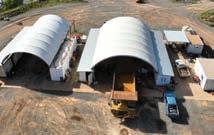
• Extensive Mobile Crushing & Screening Plant • Hercules Trommel
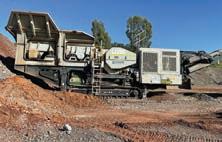
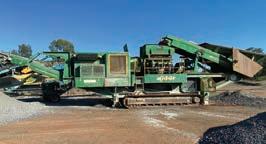

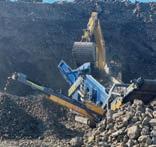
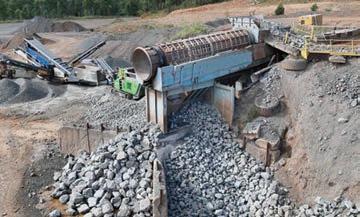
• Excavators
• Loaders• Dump Trucks• Water Truck• Generators
180,000,000
TONNE RESOURCE


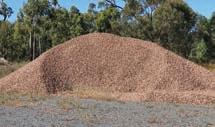
GRAHAM MESSER INDUSTRIAL AUCTIONEERS & VALUERS
KEY RESOURCE AREA (KRA 119)
Location: 15km north west of Gladstone
A proven quarry resource plus approval for a Readymix Concrete Batching Plant & Asphalt Manufacturing Plant, the Yarwun Quarry is ideally positioned to supply material for the following upcoming projects:


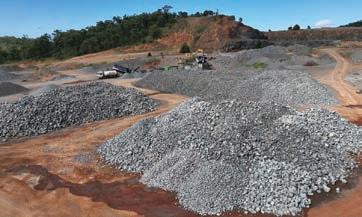
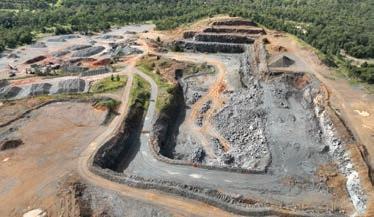
• APPROVED ONE BILLION $$$ FITZROY TO GLADSTONE PIPELINE • GLADSTONE PORT UPGRADES
• FUTURE GAS COAL AND SUSTAINABLE ENERGY PROJECTS • ROCKHAMPTON RING ROAD


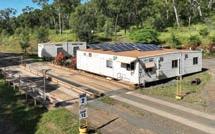
Under Instructions from Butlers Yarwun Quarries Pty Ltd FOR SALE FOR SALE EXTENSIVE CENTRAL QUEENSLAND QUARRYING OPERATION For further information and photographs visit www.grahammesser.com.au Mobile 0439 175 999 Email: morganbennettmachinery@gmail.com Ongoing Crushing & Screening activities for Haul Road & Environmental Reclamation. • KOMATSU WA500 LOADER • KLEEMANN MSS802 MOBISCREEN OFFSITE CRUSHING & SCREENING CONTRACT OFFSITE CRUSHING & SCREENING CONTRACT • TWO OPERATOR CREWS IN PLACE OVER 400,000 TPA Detailed Information Memorandum is available from the marketing agents: NOTE: The agents and the Principals for whom they act give notice that whilst every care has been taken in the preparation of this material it is given without any responsibility being accepted and intending purchasers should satisfy themselves as to the truth and accuracy of all information in these particulars by their own searches, inspections, enquiries, advices or as otherwise necessary. Consisting of: • KOMATSU PC350LC8 EXCAVATOR • KLEEMANN SCALPER MOBISCREEN Graham Messer Industrial Auctioneers & Valuers Pty Ltd Graham Messer: Mobile 0417 771 642 Email: graham@grahammesser.com.au This Freehold Quarry is being offered For Sale on a “Walk In Walk Out” basis. TO VIEW YARWUN QUARRY VIDEO CLICK ON: www.tinyurl.com/butlersyarwunquarry
FREEHOLD
31, Guerassimoff Road, Yarwun, Queensland 4694 • Total Area: 227.9 Hectares • All Extractive Industry Approvals in Place Crushing & Screening Approval Over 1,000,000 TPA (unlimited) Resource: Volcaniclastic Siltstone & Sandstone of the Doonside Volcanics All necessary
BUTLERS YARWUN FULLY OPERATIONAL
QUARRY Lot
Drive north west from Gladstone on Hanson Road towards Mt Larcom. At approx 14klm turn right into Landing Road, left into Guerassimoff Road to Yarwun Quarry.
PTY LTD





























 RAZERTAIL TRUCK UNLOADER
RAZERTAIL TRUCK UNLOADER



















































 Road Construction
Railroad Ballast
Asphalt and concrete fractions
Road Construction
Railroad Ballast
Asphalt and concrete fractions









































 Terex Washing Systems designs and manufactures a range of feeders.
Terex Washing Systems designs and manufactures a range of feeders.



 Martin Dummigan, Astec group vice
Martin Dummigan, Astec group vice


























































